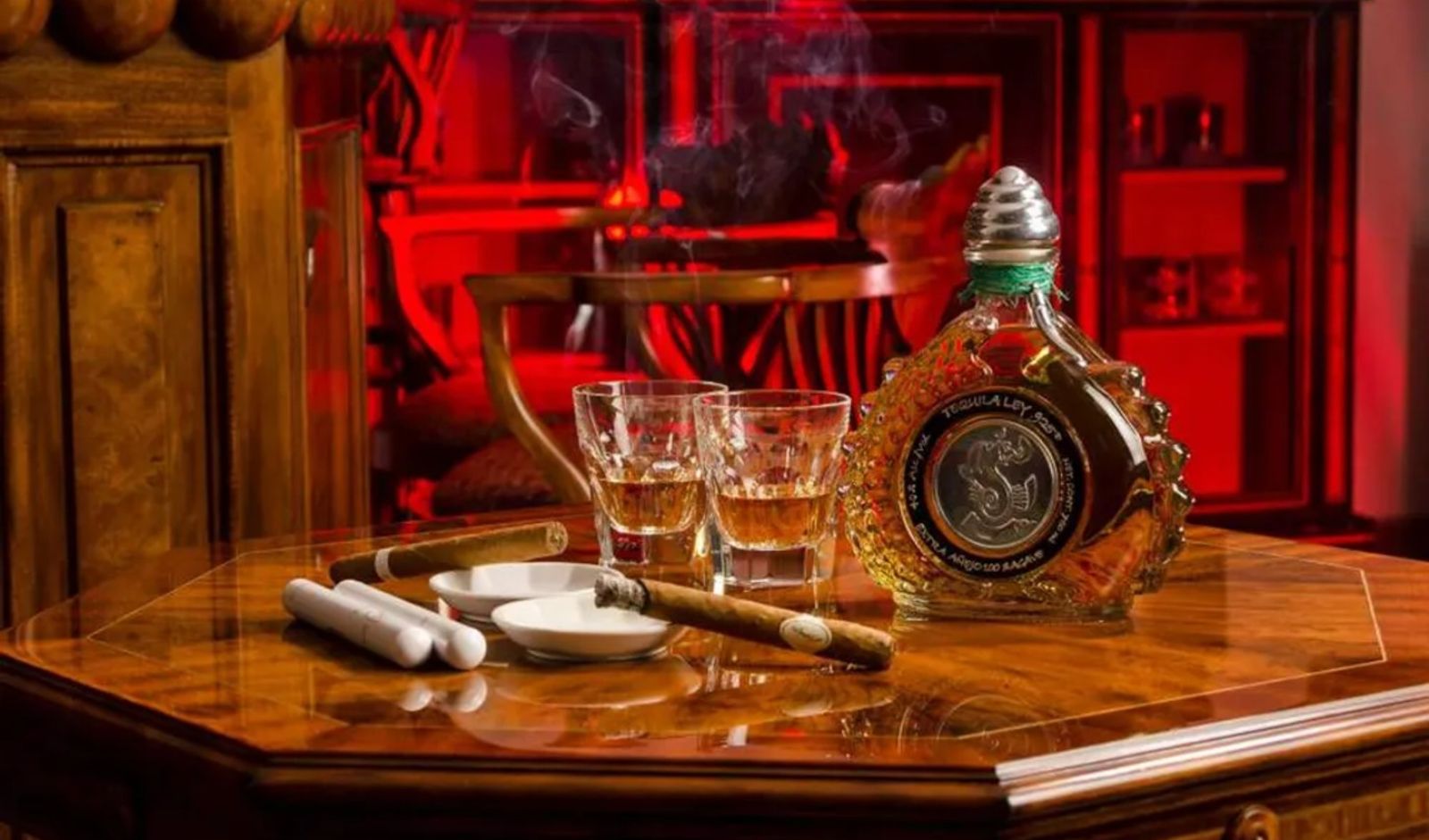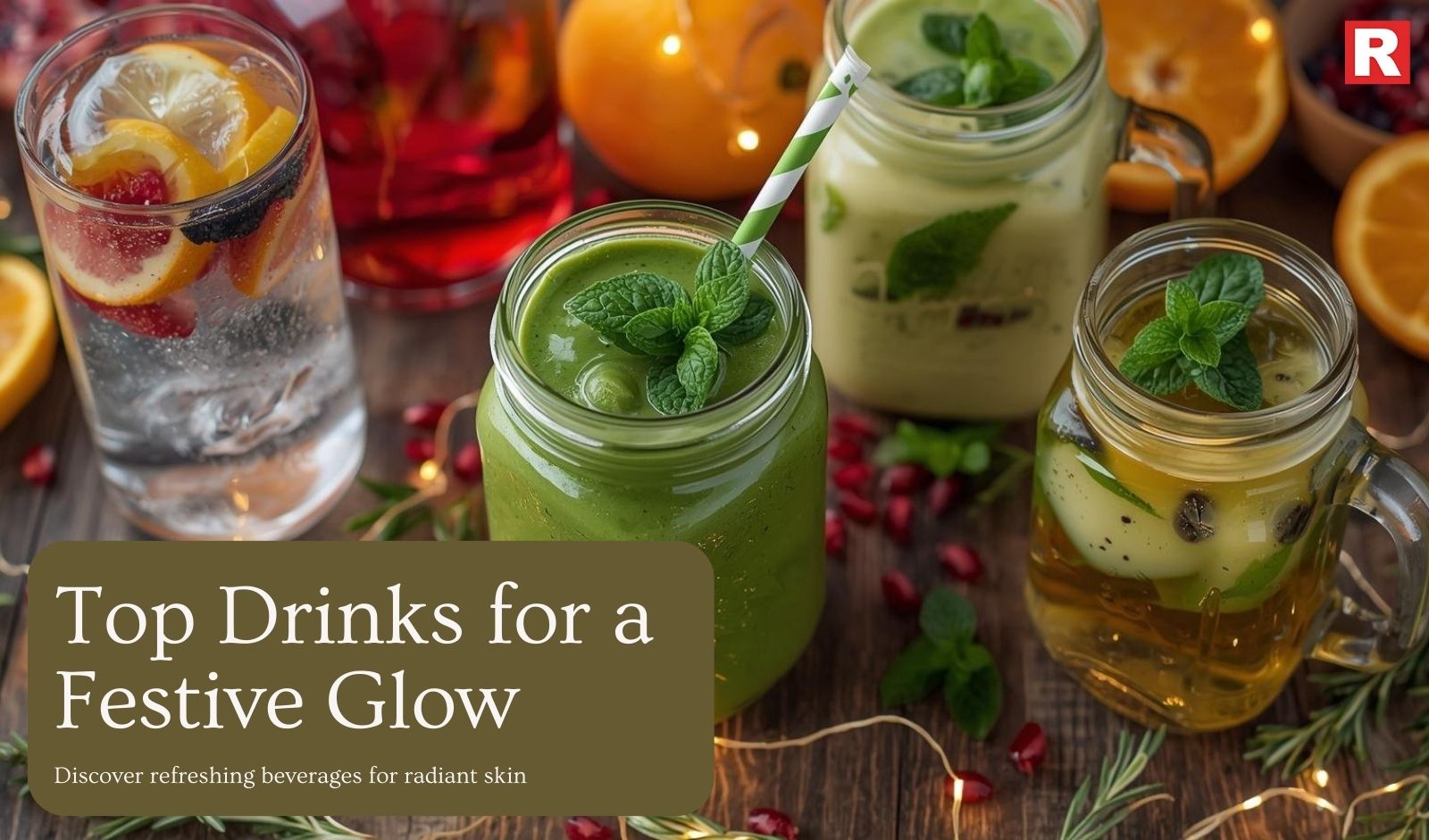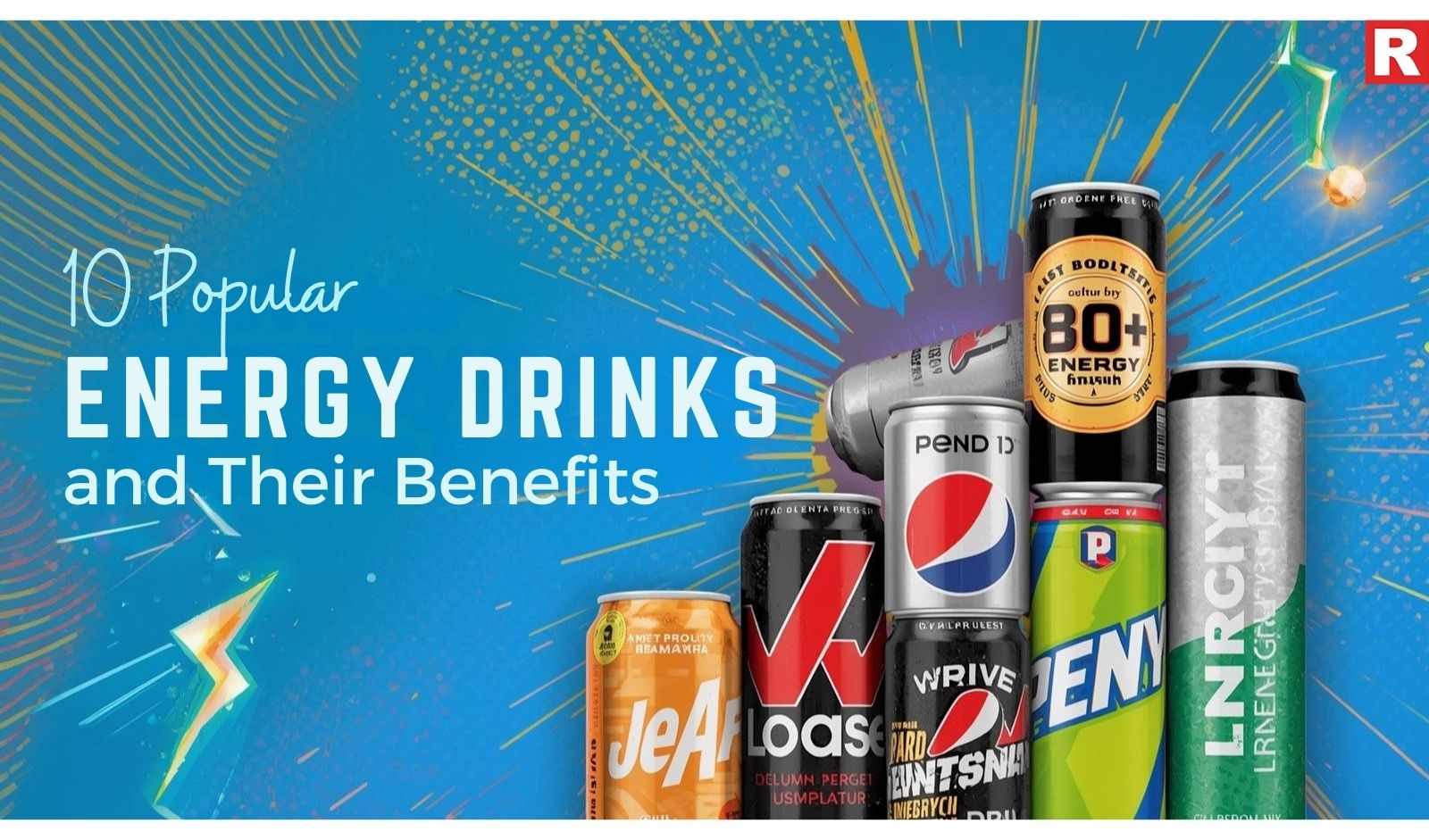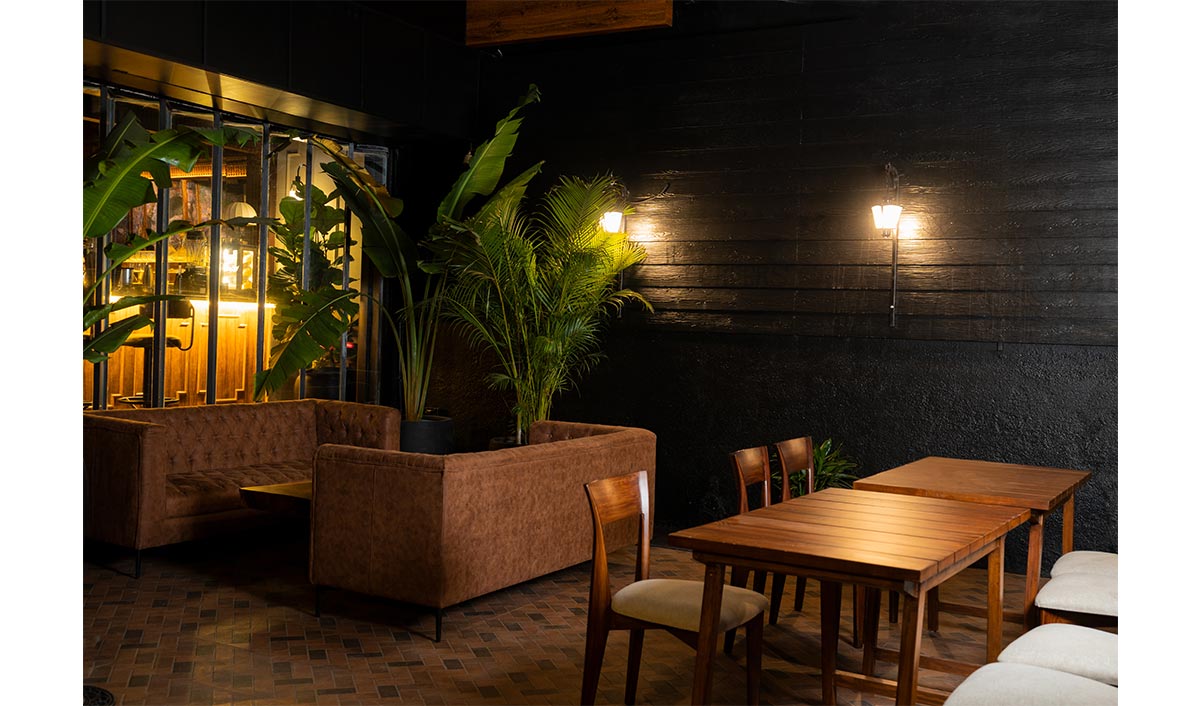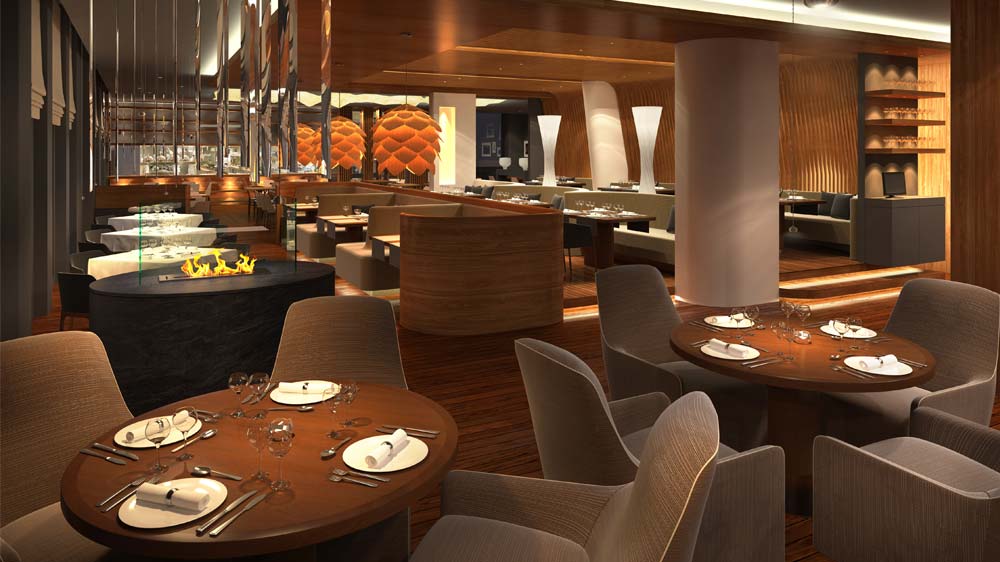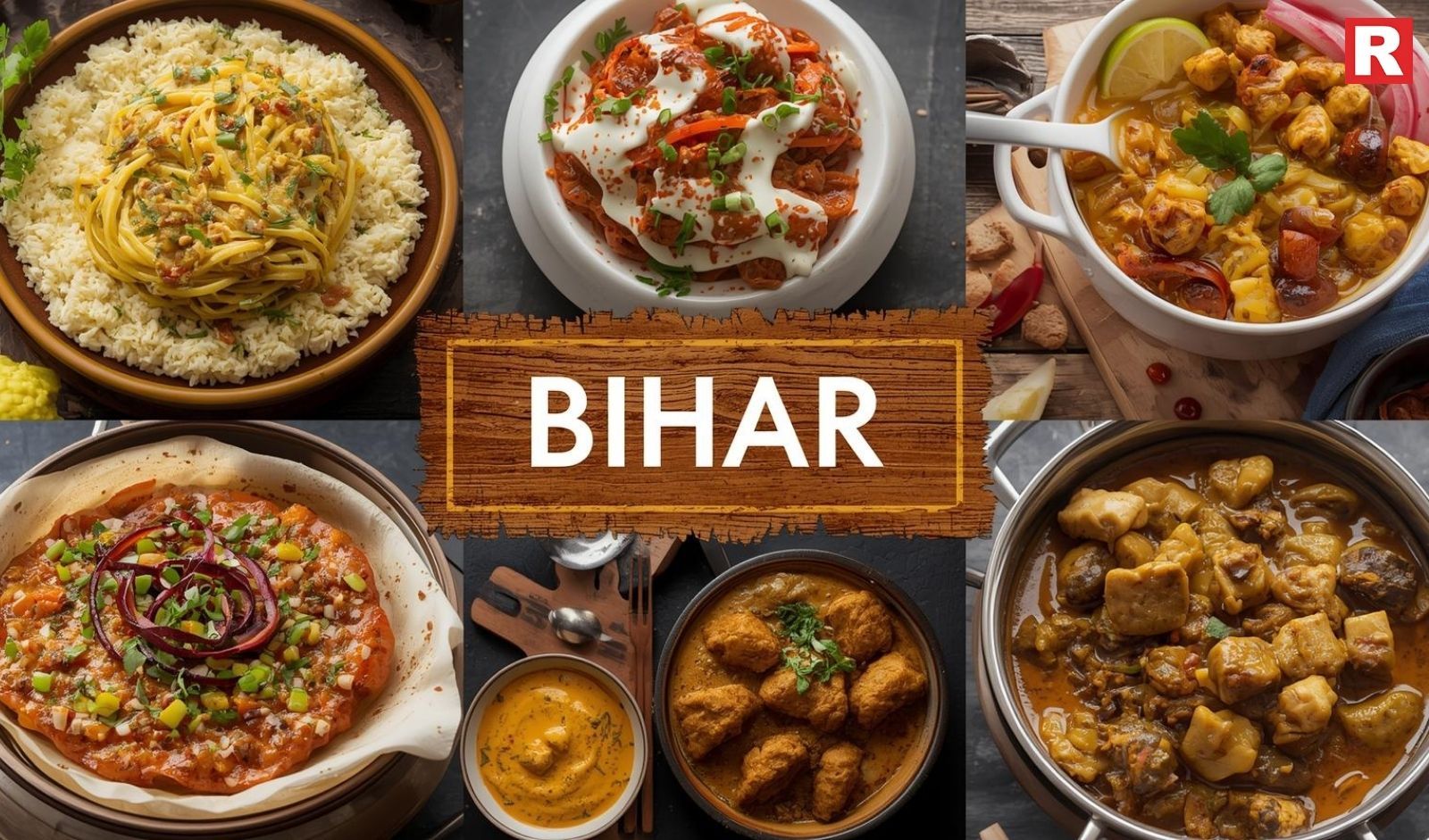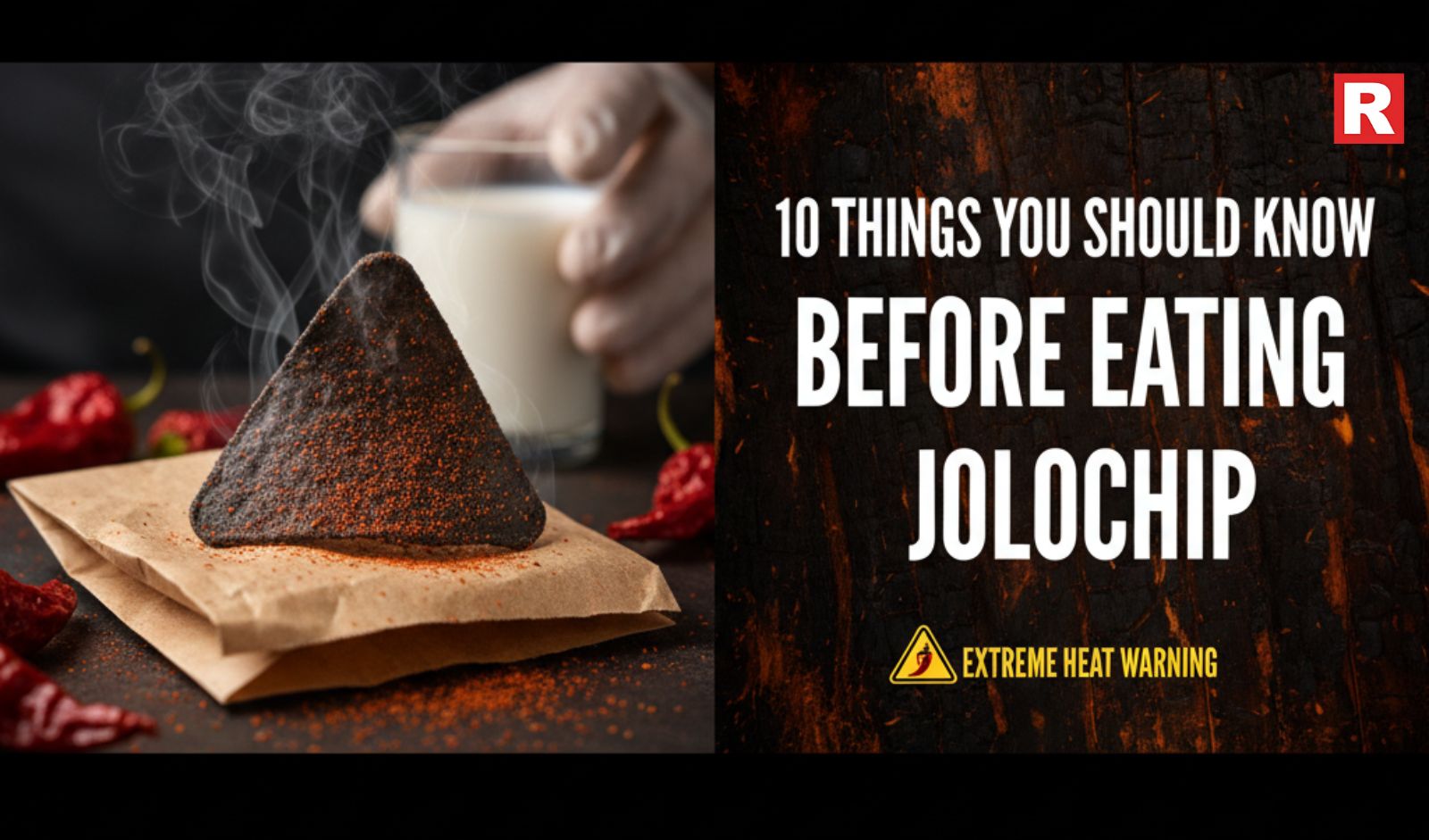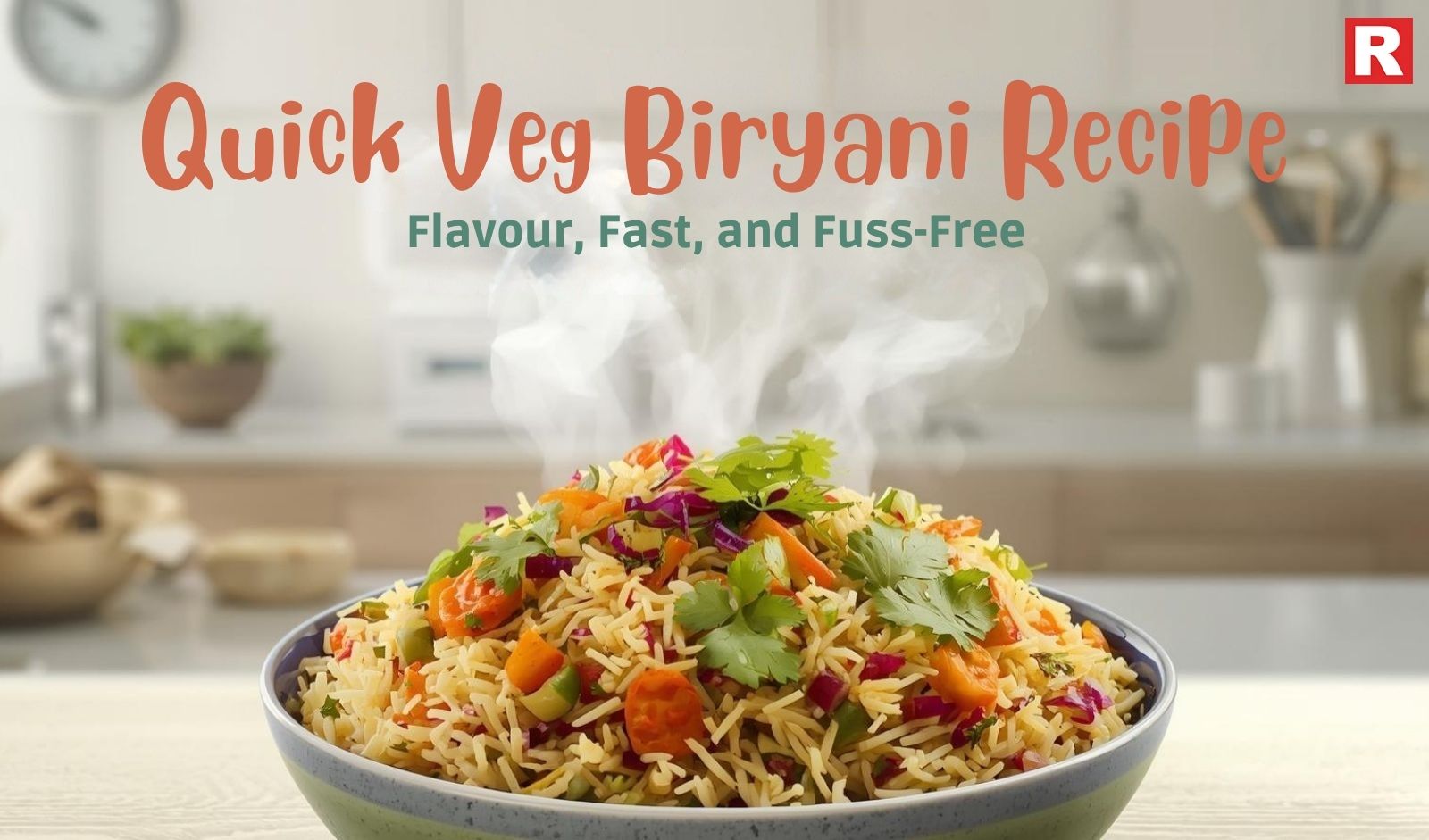
You know there's more to it than just what's inside when a bottle of alcohol costs more than a fancy apartment. The most expensive spirits in the world are the best examples of how craftsmanship, heritage, and pure luxury can come together. These aren't drinks; they're status symbols, investments, and sometimes even jewelry you can wear in liquid form.
For billionaires and elite collectors, owning these bottles means possessing something that 99.9% of the world will never experience. It's about exclusivity that money can barely buy, even when you have millions to spend.
What Makes a Bottle Worth Millions?
Extreme Scarcity: Many of these bottles exist in quantities you can count on one hand. When only three bottles exist worldwide, the price naturally skyrockets. Supply and demand economics reach their most dramatic expression here.
Precious Materials: We're talking bottles encrusted with thousands of diamonds, crafted from platinum and gold, or designed by world-renowned artists. The container often costs exponentially more than the spirit inside.
Age and Heritage: Some of these spirits have been aging since before World War II. The patience required—decades of careful storage—adds immense value. Every year a spirit ages, it becomes rarer as the "angel's share" evaporates.
Artistic Collaboration: When famous artists design labels or when master craftsmen from luxury houses like Lalique create the decanters, you're buying fine art as much as fine alcohol.
Provenance and Story: The narrative matters. Who owned it? Where was it stored? What historical events did it survive? These stories transform bottles into legends.
The Crown Jewels: 10 Alcohols That Redefined Luxury
1. D'Amalfi Limoncello Supreme — $44 Million
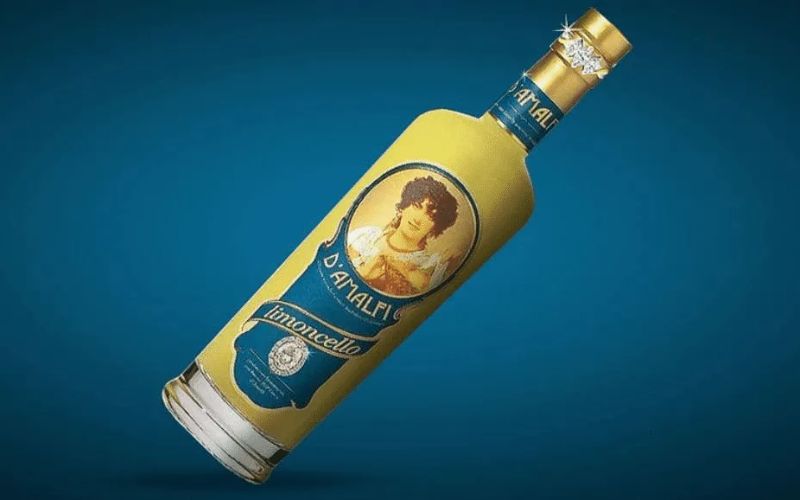
Topping the charts is a lemon liqueur that makes other expensive spirits look affordable. Only two bottles were ever made, and calling them "bottles" feels inadequate. Each is adorned with three flawless single-cut diamonds, with a rare 13-carat mammoth diamond gracing the neck. The craftsmanship is so elaborate that the bottle itself is essentially a piece of high jewelry that happens to contain limoncello.
The identity of the primary owner remains shrouded in mystery—when you spend $44 million on a bottle, privacy comes with the package. For Indian enthusiasts hoping to explore this brand, standard D'Amalfi limoncello is available in select markets, but the Supreme edition remains firmly out of reach for retail purchase anywhere in the world.
2. Isabella's Islay Whisky — $6.2 Million
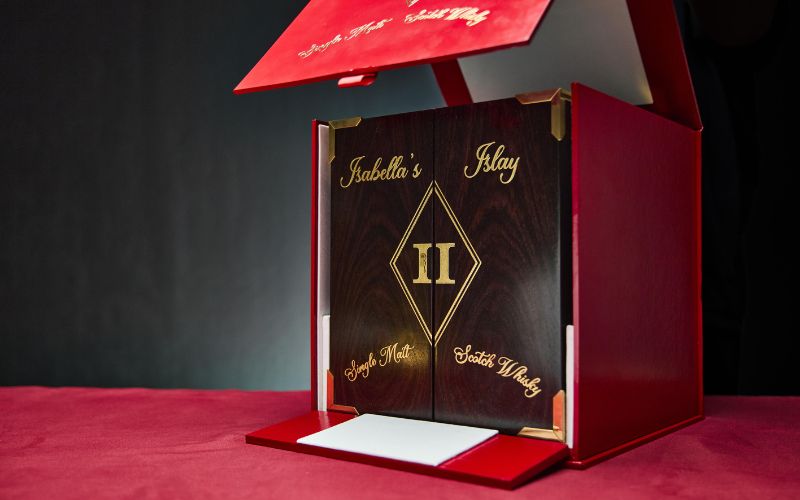
Scotland's contribution to extreme luxury comes in the form of this whisky, which features a decanter embedded with over 8,500 diamonds and 300 rubies. The exact vintage of the single malt inside remains a closely guarded secret, adding mystique to an already extraordinary offering.
What's particularly interesting is that the distillery refuses to disclose details about the whisky's age or specific characteristics. When you're spending this much, the secrecy becomes part of the allure. Ultra-high-net-worth clients around the globe have purchased bottles, though their identities remain confidential. This bottle has never touched Indian soil for retail purposes.
3. Billionaire Vodka — $3.7 Million
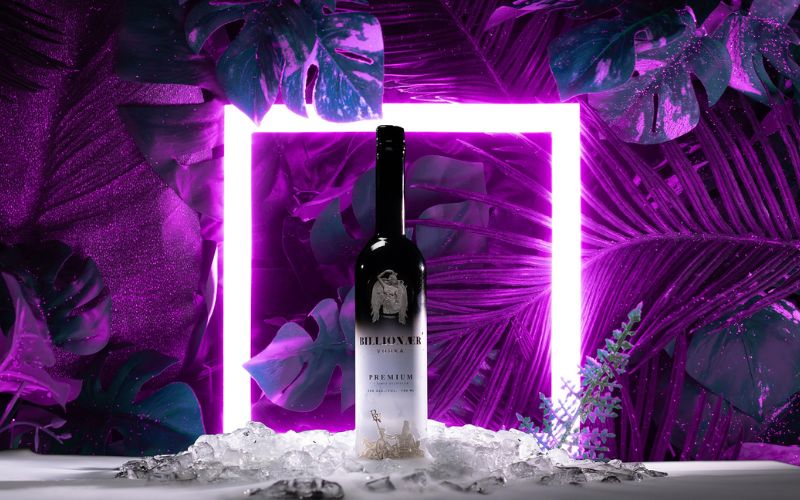
The recipe is secret. The production method is classified. What everyone can see is the platinum and rhodium-encased bottle covered in diamonds, delivered in a fur-lined presentation box. The entire package screams excess—and that's precisely the point.
Russian billionaires and select Middle Eastern royalty are rumored to own bottles, though confirmations are rare. Here's where things get confusing for Indian buyers: a product called "Billion Air Vodka" is produced locally and available in Mumbai and Pune for under ₹2,000. Despite the similar name, it's an entirely different product with no connection to the multi-million-dollar Billionaire Vodka.
4. The Macallan 1926 — $2.1 to $2.7 Million
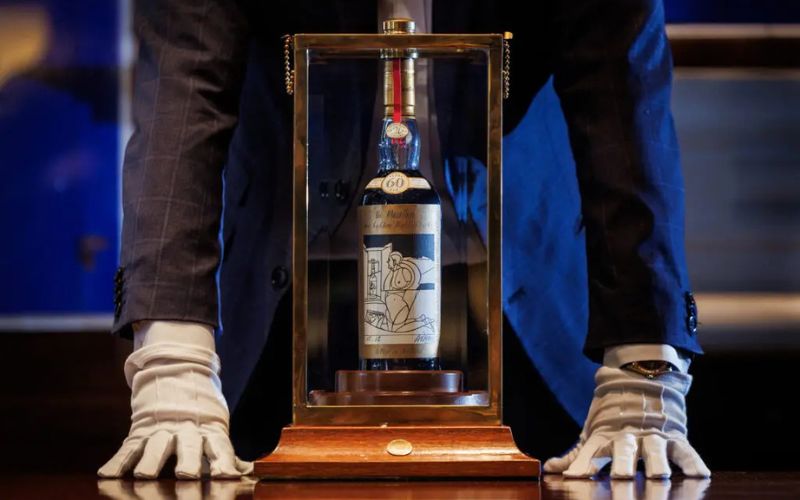
Perhaps the most famous entry on this list, The Macallan 1926 represents whisky at its absolute zenith. Only 40 bottles were released, each featuring hand-painted or specially designed labels by renowned artists including Valerio Adami, Michael Dillon, and Peter Blake.
What sets this apart is that the whisky itself justifies much of the price. The liquid has been praised by experts as exceptional, making this one of the few entries where you're not just paying for the packaging. British whisky entrepreneur Sukhinder Singh is a notable collector, as is football icon David Beckham.
Indian collectors have occasionally acquired bottles through international auctions. Singh himself, who has deep roots in the Indian community, has spoken about his prized Macallan collection. However, walking into an Indian liquor store to buy one remains impossible.
5. Henri IV Dudognon Heritage Cognac — $2 Million
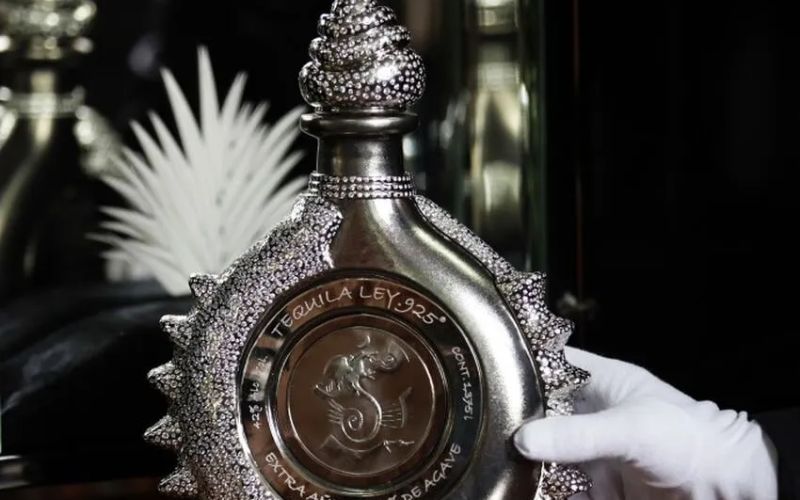
A cognac aged for a full century, presented in a vessel of 24-carat gold and platinum, studded with thousands of diamonds. The cognac house Dudognon has been crafting spirits since 1776, and this bottle represents the pinnacle of their multi-generational expertise.
The hundred-year aging process means this cognac contains brandy distilled in the early 1900s—liquid history in the truest sense. Elite European and Gulf collectors are known to possess bottles, though specific owners remain anonymous. Indian availability is non-existent for this particular expression.
6. Tequila Ley .925 — $3.5 Million
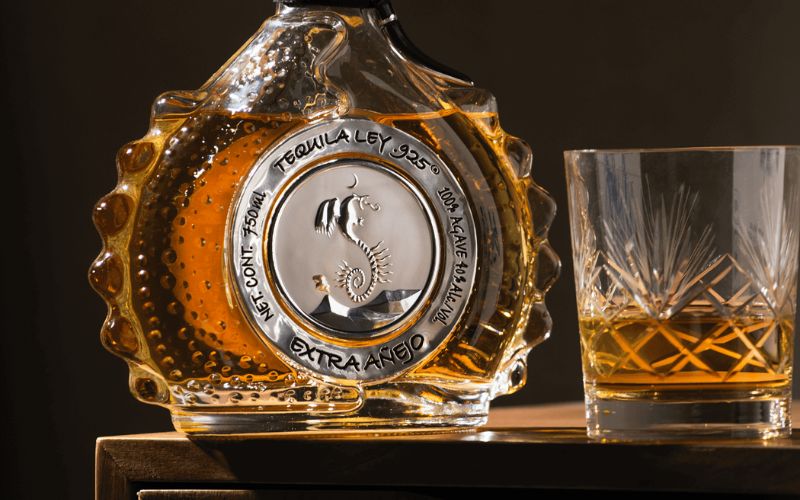
Mexico's entry into the extreme luxury spirits market comes courtesy of this tequila, housed in a bottle made with over 4,000 diamonds and pure platinum. Only one or two bottles exist globally, making it rarer than many precious gemstones.
The tequila itself is premium, but the bottle is the star. Middle Eastern royalty are rumored to own at least one. In India, this bottle has been featured in luxury displays and its theoretical Indian price (over ₹23.7 crore) has been calculated, but it's never been available for actual purchase.
7. The Macallan M Imperiale 6L — $628,000
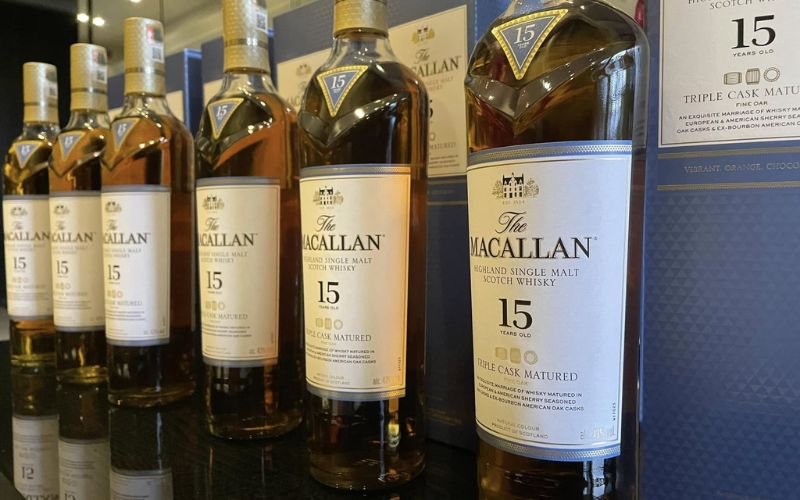
Another Macallan entry, but this time the focus is on the presentation and size. Only four were ever made, each housed in a handcrafted Lalique crystal decanter containing six liters of rare vintage single malt aged for decades.
The Lalique collaboration is significant—the French crystal house is synonymous with luxury and artistry. Each decanter required extensive hand-craftsmanship. High-profile collectors and whisky investors own these bottles, though they rarely appear in public. Access is exclusively through international auctions.
8. Dalmore 64 Trinitas — $160,000
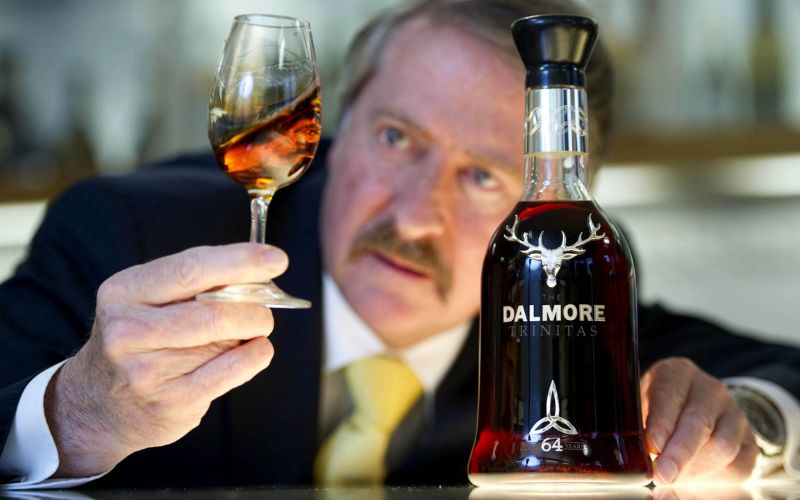
Scotland's Dalmore created just three bottles of this blend, each containing rare stocks aged up to 64 years. The scarcity is extreme even by the standards of this list.
What's remarkable is the Indian connection. Gujarati collector Mahesh Patel and UK-based Indian entrepreneur Sukhinder Singh each purchased a bottle when they were auctioned in Glasgow for £100,000 each. This demonstrates the growing appetite among Indian collectors for world-class whisky, even if these purchases happen in international markets rather than domestically.
9. Yamazaki 50-Year-Old — $343,000+
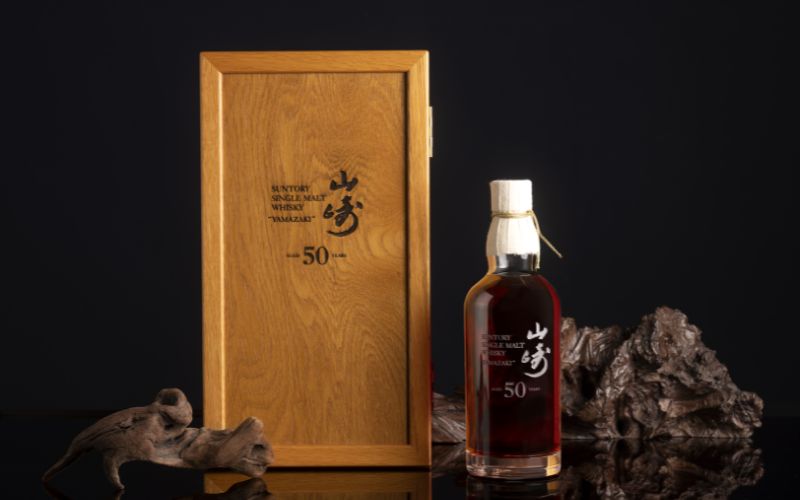
Japan's oldest and rarest single malt has achieved legendary status among whisky connoisseurs. Only a handful of bottles are released per batch, and the waiting list for allocation is years long.
The Yamazaki distillery, founded in 1923, represents Japan's entry into serious whisky-making. The 50-year-old expression showcases how Japanese patience and precision can create something truly extraordinary. Prominent Japanese collectors, including industry figures like Shinji Fukuyo, own bottles. Indian buyers can potentially acquire bottles through international auctions, but domestic retail channels don't carry it.
10. Armand de Brignac "Ace of Spades" Midas — $275,000
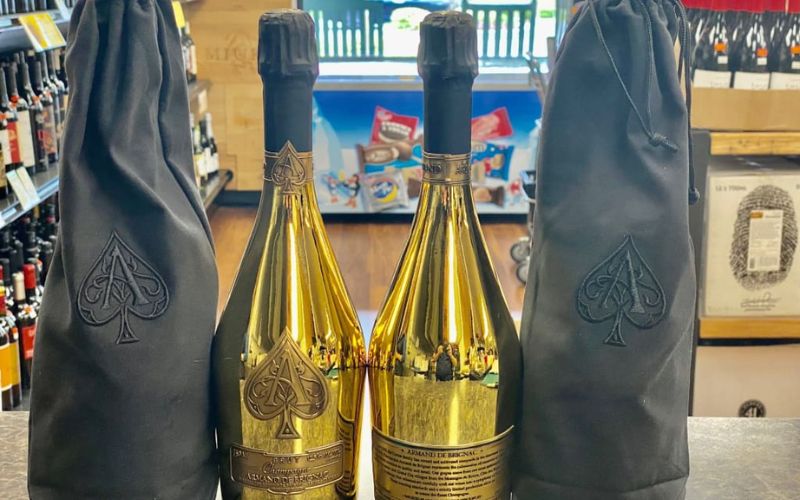
The champagne that became synonymous with hip-hop excess features giant 30-liter gold bottles designed for maximum visual impact. Each Midas is meticulously crafted and associated with the most lavish celebrations imaginable.
Jay-Z, Floyd Mayweather, and Conor McGregor have all showcased this bottle at parties, cementing its status as the ultimate celebration champagne. Limited imports reach select Indian luxury hotels, but the 30-liter Midas version remains extremely rare and generally unavailable for public purchase even internationally.
The Psychology of Ultra-Luxury Spirits
Why do billionaires and celebrities gravitate toward these bottles? The reasons are more complex than simple wealth display.
Investment Potential: Fine spirits, particularly aged whiskies, have shown remarkable appreciation. Some bottles have increased in value by 500% or more over a decade. For the ultra-wealthy, these purchases are often strategic investments that also happen to be enjoyable.
Social Currency: Opening a million-dollar bottle at an exclusive gathering creates a moment that guests will never forget. It's experiential luxury at its most extreme—you're not just offering a drink, you're creating a story people will tell for years.
Completion of Collections: Serious collectors operate on completionist logic. If you have 39 rare whiskies, you'll pay almost any price for the 40th that completes the set. This psychology drives auction prices into the stratosphere.
Preservation of Heritage: Some collectors genuinely see themselves as custodians of liquid history. When you own a cognac distilled before your grandparents were born, you're preserving a tangible link to the past.
The Thrill of Unobtainability: For people who can buy almost anything, the few things they cannot easily acquire become irresistible. The hunt itself provides satisfaction that routine luxury purchases cannot match.
The Indian Context: A Growing But Limited Market
India's luxury spirits market is expanding rapidly, with urban centers like Mumbai, Delhi, and Bangalore seeing increasing demand for premium and super-premium offerings. However, the ultra-luxury segment represented by this list remains largely inaccessible for several reasons.
Regulatory Constraints: India's complex alcohol regulations vary by state, making importation of extremely rare spirits challenging. Customs duties on alcohol imports are substantial, often doubling or tripling the base price.
Excise Complications: Different states have different rules about what can be sold and at what price points. Bringing in a multi-million-dollar bottle for retail sale faces bureaucratic hurdles that make the process impractical.
Market Size: While India has a growing population of ultra-high-net-worth individuals, the domestic market for $1 million+ bottles remains small. International auction houses find it more efficient to handle these sales globally rather than establishing India-specific channels.
Auction Access: Indian collectors like Sukhinder Singh and Mahesh Patel have demonstrated that Indians are competitive buyers in the global market. However, their purchases happen at international auctions in London, New York, or Hong Kong rather than domestically.
That said, the scene is evolving. High-end hotels in Mumbai and Delhi occasionally stock premium expressions from brands like Macallan, Dalmore, and Armand de Brignac—not the million-dollar editions, but respectable entries from the same houses. Specialized liquor stores in Gurgaon and South Mumbai have begun catering to collectors with rare releases. The secondary market, while informal, connects buyers with sellers of premium bottles.
A few luxury liquor outlets in India have made headlines for their exclusive selections and premium ambiance, offering valet service and climate-controlled storage. These venues stock high-end spirits that, while not reaching the millions, still represent significant luxury purchases in the ₹50,000 to ₹5 lakh range.
What the Future Holds
The market for ultra-luxury spirits shows no signs of slowing. Auction prices continue to break records, with new entries challenging the existing hierarchy. Emerging markets, particularly in Asia and the Middle East, are driving demand higher.
For India, the trajectory points toward greater accessibility over time. As regulations potentially modernize and the collector base grows, we may see more international auction houses hosting India-focused events or more seamless import channels for legitimate collectors.
Distilleries are taking note of emerging markets. Some Scottish distilleries now conduct tasting events in India, building relationships with potential future buyers. Japanese whisky makers are exploring collaboration with Indian distributors. French cognac houses are studying the Indian market's peculiarities.
The rise of NFTs and blockchain authentication may also transform this space. Some distilleries are experimenting with digital certificates of authenticity that could make ownership transfer more transparent and potentially more accessible to international buyers, including those in India.
The Bottom Line
These ten bottles represent the absolute peak of luxury spirits—where craftsmanship, rarity, precious materials, and cultural cachet combine to create objects of almost absurd value. They exist in a realm where normal market forces bend and break, where a bottle of tequila costs as much as a private island.
For billionaires and elite collectors, these bottles serve multiple purposes simultaneously: investment vehicles, status symbols, conversation pieces, and genuine appreciation of extraordinary craftsmanship. The fact that most will never be opened adds to their mystique—they're Schrödinger's drinks, simultaneously perfect and potentially disappointing, their value existing in the realm of possibility.
For Indian enthusiasts, these bottles remain largely aspirational. The path to ownership runs through international auctions and private sales rather than domestic retail. However, the broader luxury spirits market in India continues to mature, offering increasingly sophisticated options for those looking to explore premium drinking experiences without quite reaching the multi-million-dollar threshold.
Whether you view these bottles as the peak of human achievement in spirits or as symbols of excessive wealth, one thing is certain: they represent a world where the ordinary rules of commerce don't apply, where rarity and craftsmanship can transform a drink into a treasure worth more than most people will earn in multiple lifetimes.
For now, most of us will have to content ourselves with admiring these bottles from afar—through auction catalogs, museum displays, and articles like this one. And perhaps that's fitting. Some luxuries are meant to be extraordinary precisely because they remain out of reach, existing as reminders that there are still things in this world that money can barely buy, even when you have all the money in the world.

The festive season is a time of joy, celebrations, and togetherness. People often stay up late, eat rich food, and spend time with family and friends. While it’s fun, it can also leave the body tired and the skin looking dull. The skin needs extra care during this time. What a person drinks plays a big role in keeping the skin healthy. Drinking the right fluids helps the body stay hydrated. It also helps reduce inflammation and supports skin repair. This keeps the skin fresh, soft, and glowing. Simple and natural drinks can make a big difference. They provide essential vitamins, minerals, and antioxidants. These nutrients help the skin stay firm and radiant. Adding such drinks to a daily routine is easy. They don’t require special ingredients or hard steps.
By drinking healthy beverages regularly, the body gets the support it needs. The skin looks brighter and feels better. A few small changes can lead to noticeable results. These drinks are a simple way to help anyone look and feel their best throughout the festive season. Taking care of the skin starts from within.
Read more: 6 Benefits of Drinking Black Coffee
12 Delicious High-Protein Foods to Eat Daily for a Healthier You
Why Drinks Matter for Skin Health
Your skin is your body’s largest organ. It needs water, vitamins, and minerals to stay soft, smooth, and glowing. Many skin problems, like dryness, puffiness, and breakouts, can happen when you don’t drink enough fluids or eat unhealthy food. Drinks with natural ingredients like fruits, herbs, and seeds can boost your skin’s health. They supply your body with essential nutrients, antioxidants, and hydration. These drinks also support digestion, reduce inflammation, and help your body remove toxins.
Let’s look at the best drinks that can give you a festive glow while keeping you refreshed.
1. Lemon and Honey Detox Water
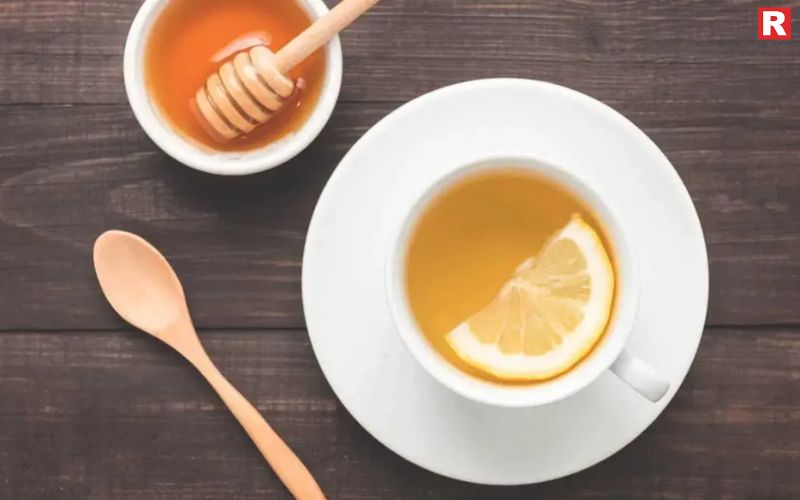
Lemon and honey detox water is one of the simplest yet most powerful drinks for glowing skin. Lemon is full of vitamin C, which helps your body produce collagen. Collagen keeps your skin firm and smooth. Honey is a natural humectant. It locks in moisture and heals dry skin. You can make this drink by adding half a lemon’s juice and a teaspoon of honey to a glass of lukewarm water. Drink it in the morning or between meals. For an extra boost, add a pinch of turmeric powder. Turmeric has anti-inflammatory properties that calm irritated skin. This simple drink helps flush out toxins and keeps your skin hydrated throughout the day.
2. Coconut Water with Mint and Basil
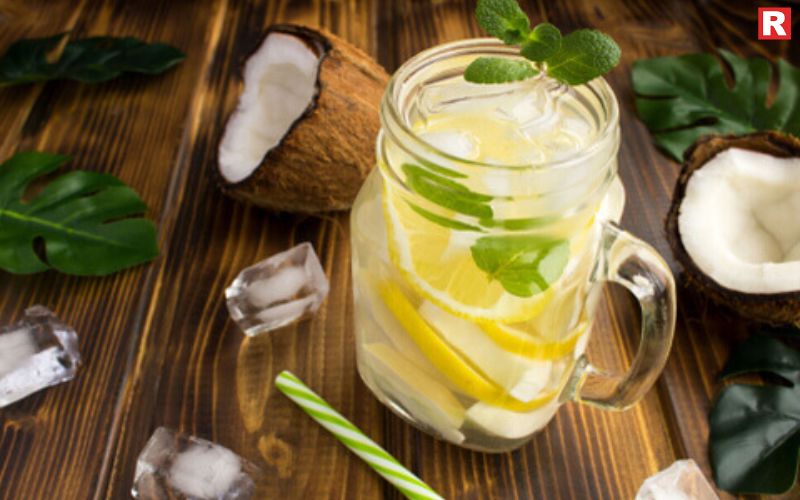
Coconut water is a natural hydrator. It is rich in electrolytes like potassium and magnesium. These help your body stay hydrated, which is essential for soft and plump skin. Mint adds a cooling effect and helps with digestion. Basil is full of antioxidants that support detoxification. Together, they make a refreshing drink that keeps your skin fresh and radiant. Mix a glass of coconut water with a few mint leaves and crushed basil. Drink it after a workout or when you spend long hours outdoors in the sun. This drink not only keeps you cool but also helps your skin retain moisture, making it look healthy and glowing.
Know more: Pani Puri Has Different Names in Different Indian States—Know Them All
3. Aloe Vera Juice with Cucumber
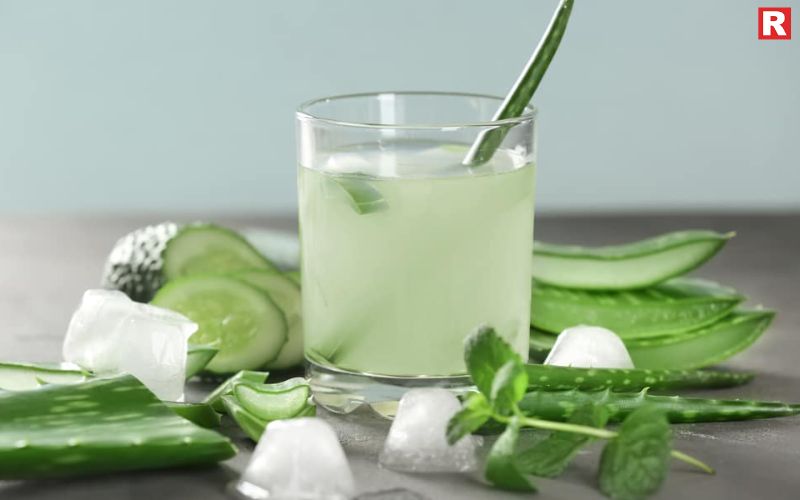
Aloe vera is known for its healing properties. It helps soothe and repair the skin. It also supports hydration from inside. Cucumber adds extra moisture and helps reduce puffiness. It is rich in water content and vitamins that nourish your skin. Blend fresh aloe vera gel with cucumber slices and a little water. You can also add a few drops of rose water for a floral scent and additional skin benefits. Drink this in the afternoon or before bed to relax and rejuvenate your skin. It helps in reducing inflammation, keeping the skin soft, and improving texture.
4. Turmeric and Ginger Golden Elixir
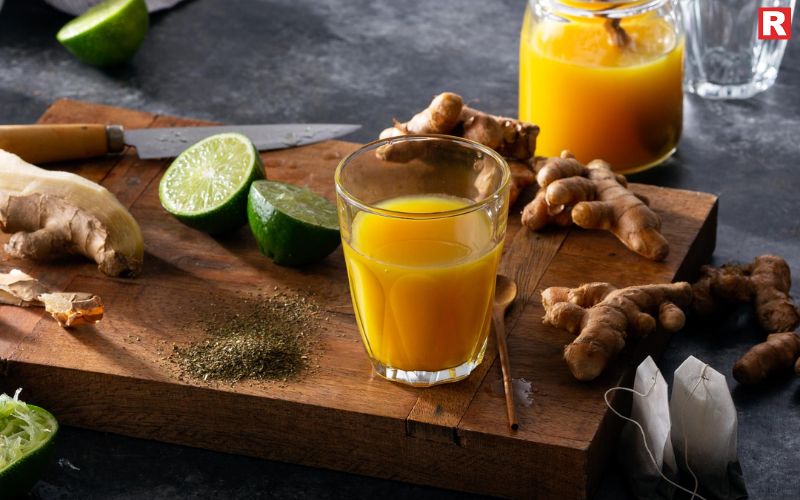
For those who want a stronger solution, turmeric and ginger are a perfect pair. Turmeric contains curcumin, a compound that fights inflammation and promotes skin repair. Ginger improves blood flow and helps your body absorb nutrients better. You can make a golden elixir by mixing a teaspoon of turmeric powder and half a teaspoon of grated ginger in warm water. Adding a pinch of black pepper helps your body absorb turmeric more effectively. Drink this in the morning or evening. It helps reduce puffiness, brighten your skin, and improve circulation. This drink gives you a natural glow without harsh chemicals.
5. Berry Smoothie with Flaxseeds
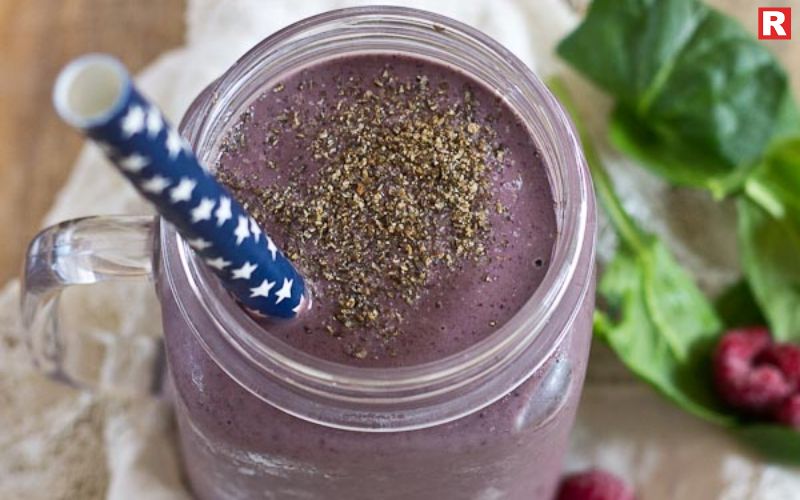
Berries like strawberries, blueberries, and raspberries are packed with antioxidants. These help fight free radicals that cause skin aging and dullness. Flaxseeds are rich in omega-3 fatty acids that support healthy skin and reduce dryness. Blend a cup of mixed berries with a tablespoon of flaxseeds and some yogurt or almond milk. You can also add a small piece of banana for sweetness. This smoothie is perfect as a snack or after lunch. It helps keep your skin firm and youthful by protecting it from damage.
6. Green Tea with Lemon and Honey
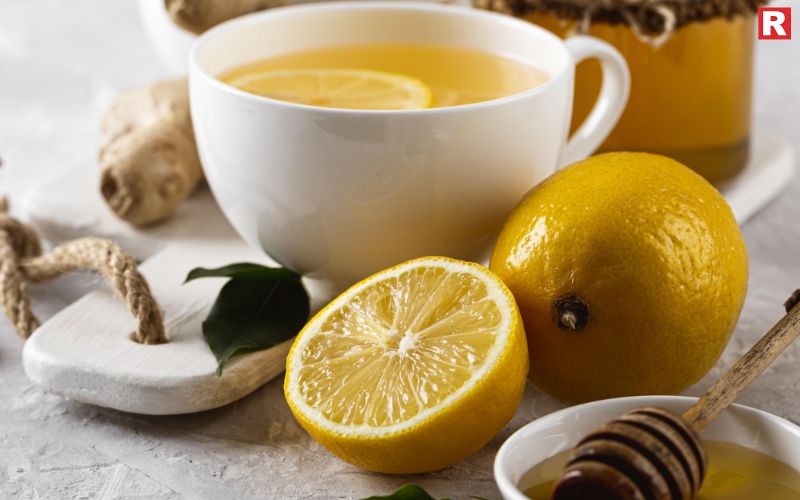
Green tea is one of the healthiest drinks for glowing skin. It contains polyphenols that protect your skin from environmental damage and pollution. These compounds also help fight inflammation. Add lemon juice and a small amount of honey to brewed green tea. Lemon adds vitamin C, while honey provides hydration. Drink this tea any time you need a relaxing boost. It not only supports your skin’s health but also helps calm your mind.
Also check: 5 Ways to Use Garden Cress Seeds (Halim) for Stronger Hair and Bones
How to Make These Drinks Work Best for You
- Consistency is key: Drinking these beverages regularly will give you the best results. Make them a part of your daily routine.
- Stay hydrated: Along with these drinks, make sure you drink plain water throughout the day.
- Balance your diet: Eat fruits, vegetables, and healthy fats like nuts and seeds to complement the effects of these drinks.
- Get enough sleep: Your skin repairs itself at night. A good sleep schedule will enhance the benefits of these drinks.
- Manage stress: Stress can affect your skin’s appearance. Try meditation, yoga, or simple breathing exercises to keep calm.
Check more: 5 Foods to Avoid for Better Cholesterol
These 7 Foods Can Help You Cool Your Stomach in Summer
Six Benefits of Starting Your Day with Okra Water
Glow Up!
Looking good during festivals doesn’t have to be hard or expensive. With a few simple drinks, you can give your skin the nourishment it needs. These beverages are natural, safe, and easy to prepare. They not only keep you hydrated but also protect your skin from damage and stress. Start your day with lemon and honey detox water, enjoy coconut water in the afternoon, and sip on green tea in the evening. With small changes, you will see a big difference in how your skin looks and feels. Celebrate this festive season with confidence, energy, and glowing skin!
Disclaimer: This article is intended for general informational purposes only and should not be considered a substitute for professional medical advice, diagnosis, or treatment. Readers are advised to consult a qualified healthcare professional before making any dietary, health, or lifestyle changes.

Living in the modern world has become a race against time. In fact, everyone is surviving here instead of living where each day becomes more hectic than the other. From daily schedules that are too demanding to daily exercise routines that are actually designed to get fit but only end up taking more of our energy, or just the desire to go through the day, people need an energy boost to go through everything. This leads us to reach out to carbonated energy drinks. These beverages, which are designed to give us a rapid boost of energy, increase our mental clarity, and help us perform better physically, are getting more popular day by day. But not each drink is the same, and drinking anything would not give you the energy boost you need.
So, in this article, we will dive into the world of energy drinks and pick up the 10 most popular brands from the market. To help you comprehend the different benefits they offer and how they provide that much-needed boost, we'll break down the main components of each, from sugar and caffeine to extra vitamins and performance-enhancing substances.
Read more: What Are Rail Drinks? The Anatomy of Your Cheapest Night Out
Understanding the Basics of Energy Drinks
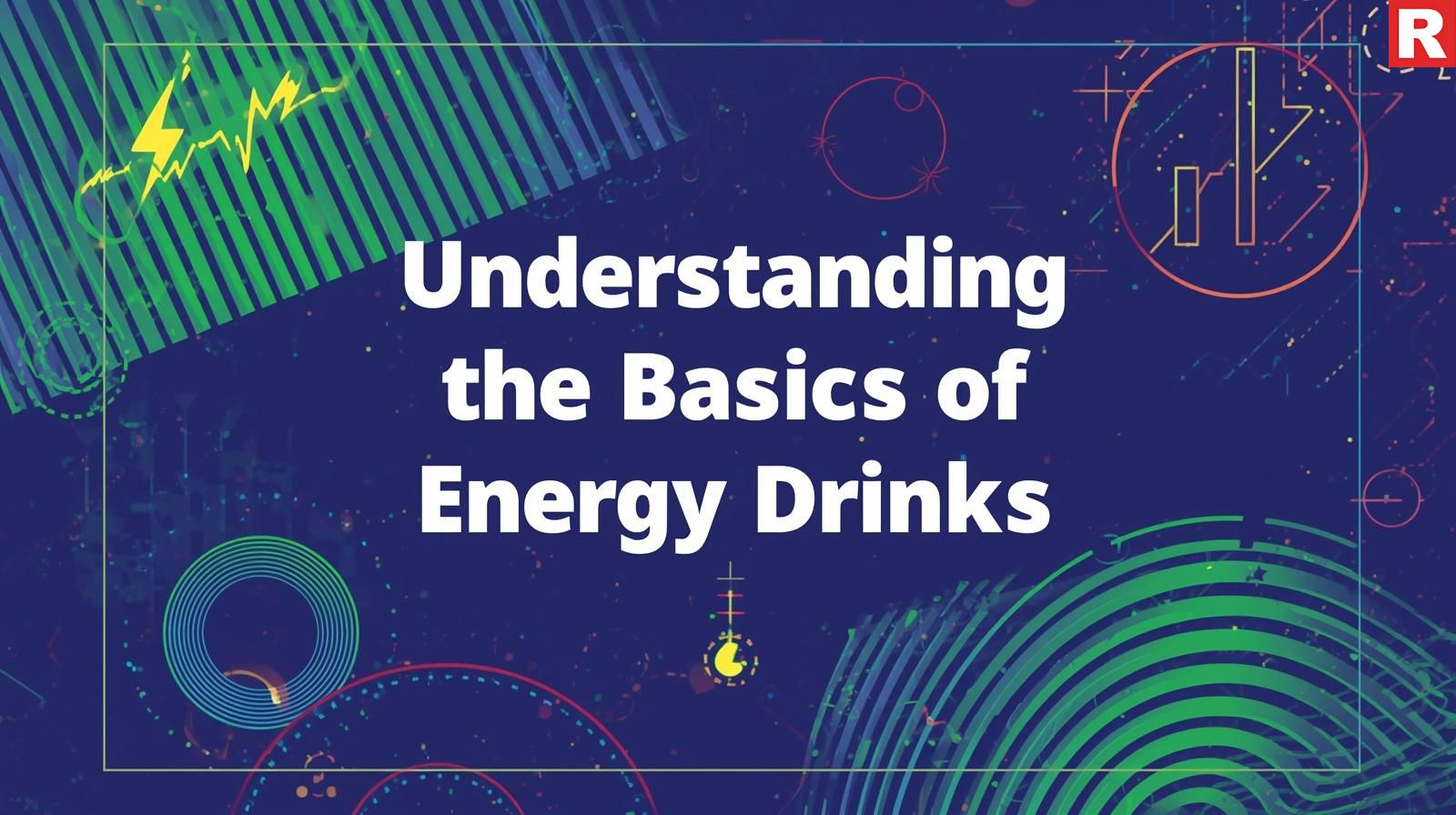
The majority of energy drinks use a similar combination of substances to produce their energizing effects. Caffeine, a naturally occurring substance that blocks the brain's adenosine receptors( these receptors induce sleep and exhaustion) to lessen feelings of exhaustion, is usually the main ingredient. In addition to caffeine, many contain a combination of sugars (such as sucrose and glucose) for a rapid energy boost, B vitamins (B2, B3, B6, and B12) to help with energy metabolism, and other safe stimulants and substances.
Typical additives are as follows:
- Taurine: An amino acid considered to be involved in physical performance, taurine promotes nerve growth.
- Guarana: A high-caffeine plant extract that is frequently utilized to extend the stimulating effects of drinks.
- Ginseng: A botanical extract that is said to increase vitality and lower stress levels.
- L-Carnitine: One substance that helps turn fat into energy is L-carnitine.
Even while these components may provide advantages like improved attention and alertness, it's important to use energy drinks sensibly. If taken in excess, the high amounts of sugar and caffeine may cause adverse side effects.
Disclaimer: This article is intended for general informational purposes only and should not be considered a substitute for professional medical advice, diagnosis, or treatment. Readers are advised to consult a qualified healthcare professional before making any dietary, health, or lifestyle changes.
Top 10 Popular Energy Drinks and Their Profiles
This article provides a thorough analysis of ten well-known energy drinks, highlighting their main characteristics, advantages, and nutritional data per average 16-ounce (473 ml) can, unless otherwise noted.
1. Red Bull
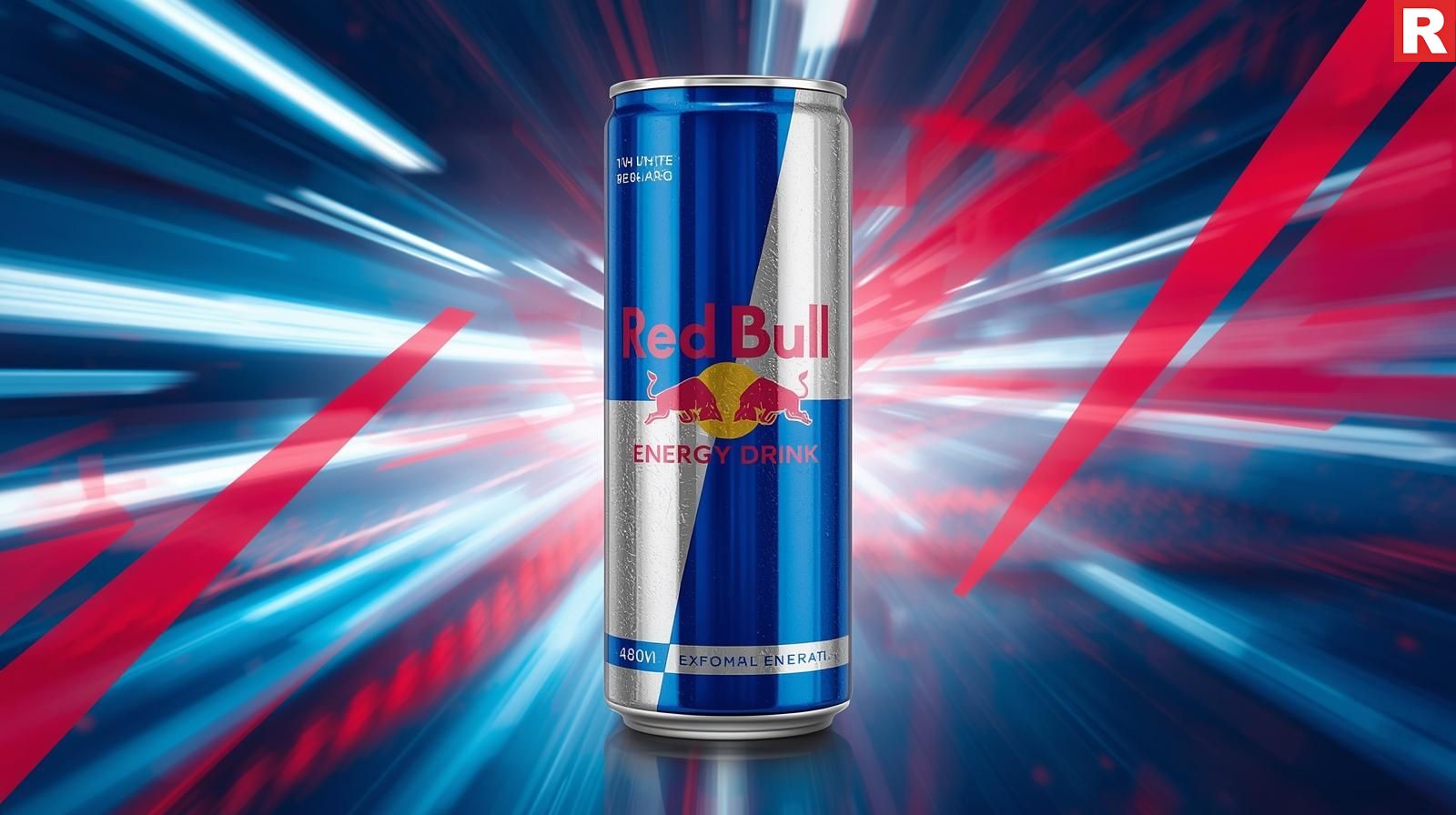
It is the undeniable leader that established the whole energy drink market. Red Bull's famed "gives you wings" tagline and iconic slim can are well-known around the world. It is a high-end product that is frequently linked to excellent performance and late-night productivity in India. It gives you a strong physical and mental boost.
Caffeine: 75 mg per 250 ml can.
Sugar: 27.5 g (11 g per 100 ml) per 250 ml can.
Calories: 115 kcal (46 kcal per 100 ml) per 250 ml can.
Energy Type: A physical jolt paired with a focused and alert mental boost.
Know more: Coffee Cocktail Drinks: 10 Must-Try Options to Follow in 2025
2. Monster Energy
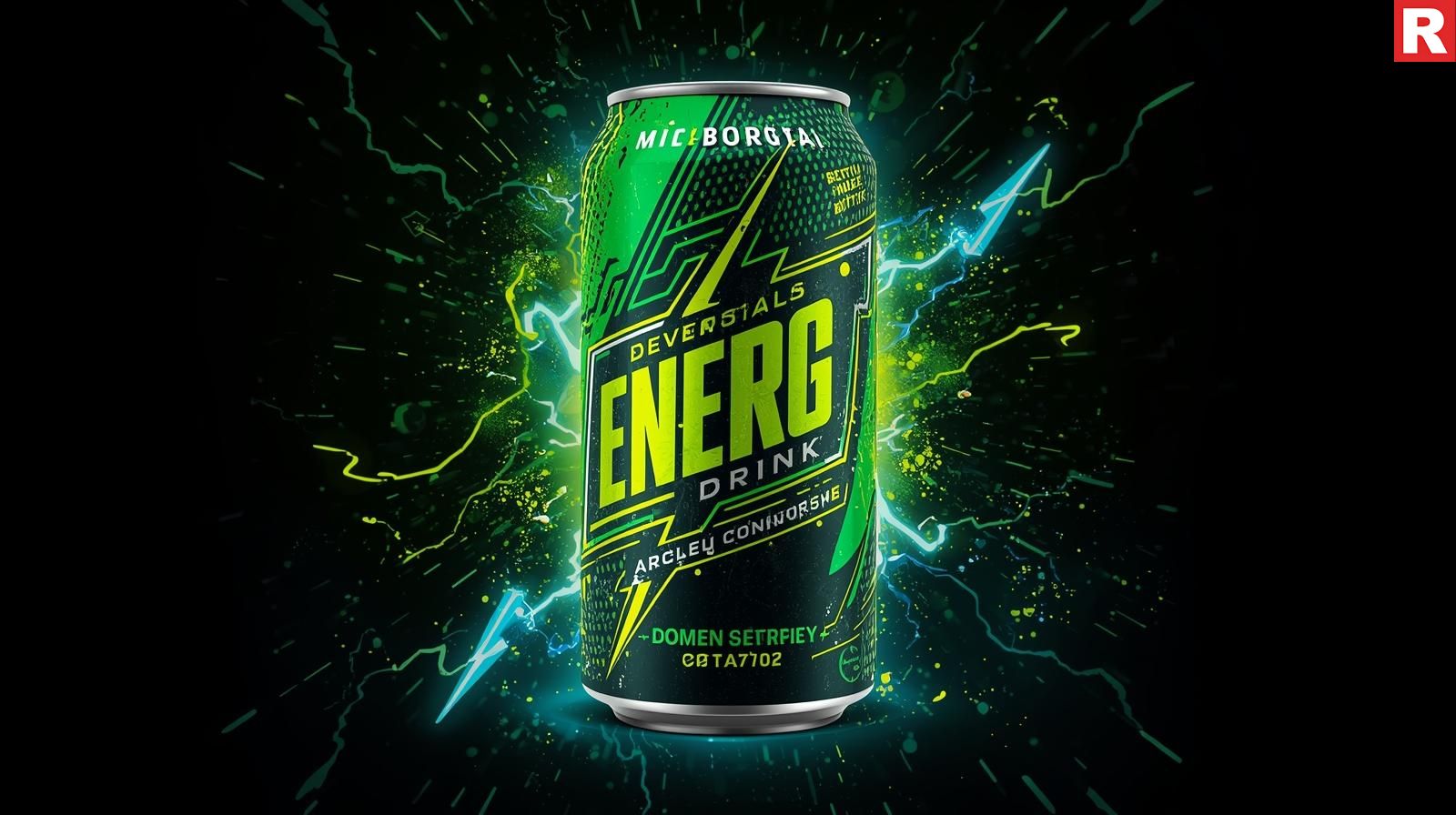
Red Bull's major rival, Monster, is renowned for its huge can size and strong, "no-nonsense" branding. It is well-liked by athletes, gamers, and anybody else in need of a stronger energy boost since it provides a stronger and longer-lasting energy boost than its competitors. Its combination of B vitamins, taurine, and caffeine seeks to provide a full-bodied energy boost.
Caffeine: 160 mg per 500 ml can.
Sugar: 55 g per 500 ml can.
Calories: 237 kcal per 500 ml can.
Energy Type: A strong, continuous energy boost that is perfect for extended periods of mental or physical exertion.
3. Sting
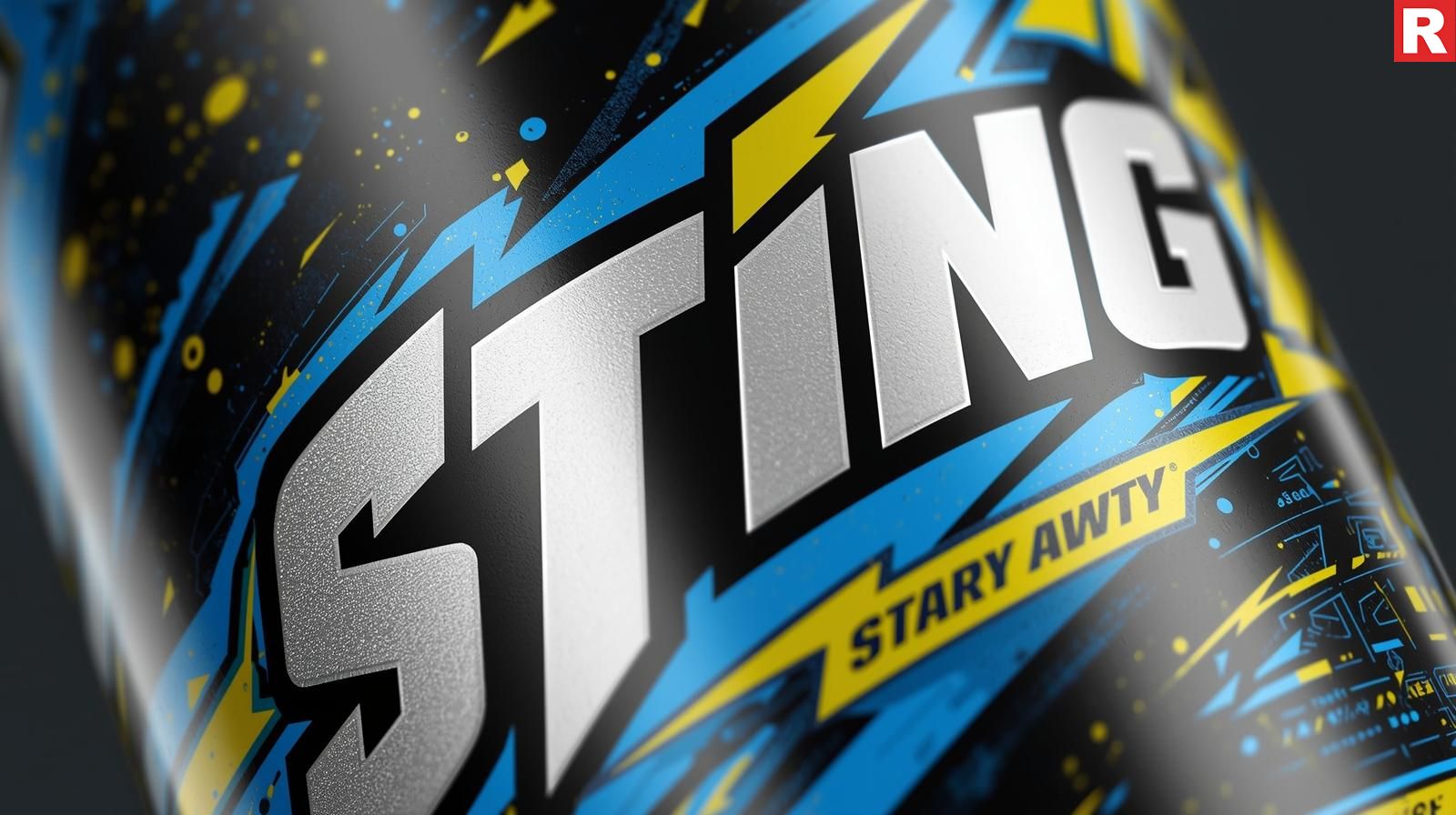
Sting, a PepsiCo product, has swiftly gained popularity in India's mass market thanks to its affordable price and unique, sweet taste. College students and young adults looking for a quick and easy energy boost are particularly fond of it. Its flavor and vivid color are two of its main attractions.
Caffeine: 72 mg per 250 ml bottle.
Sugar: 17.5 g (7 g per 100 ml) per 250 ml bottle.
Calories: 70 kcal (28 kcal per 100 ml) per 250 ml bottle.
Energy Type: A quick energy boost that is fueled by high-octane sugar and caffeine.
4. Gatorade
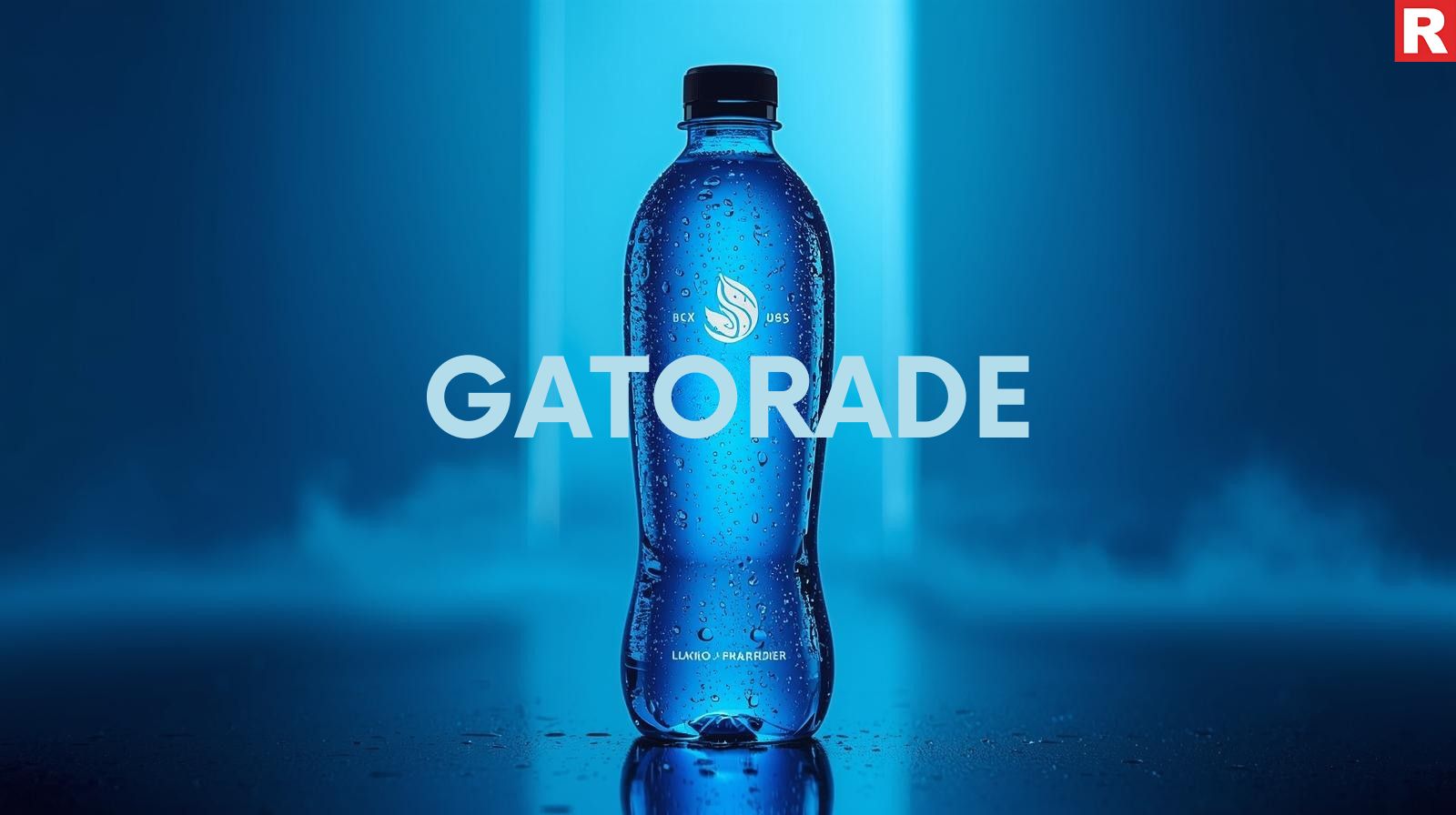
Despite being a sports drink rather than a usual energy drink, Gatorade is popular in India because it replenishes energy, especially during or after physical activity. Although it doesn't include caffeine, it gives you energy by restoring the body's electrolyte and glucose balance after you sweat out.
Caffeine: 0 mg.
Sugar: 30 g (6 g per 100 ml) per 500 ml bottle.
Calories: 120 kcal (24 kcal per 100 ml) per 500 ml bottle.
Energy Type: Hydration and electrolyte replacement provide energy for physical activity and recovery.
What's new: Top 10 Non-alcoholic Drink Ideas for Your Restaurant
5. Mountain Dew
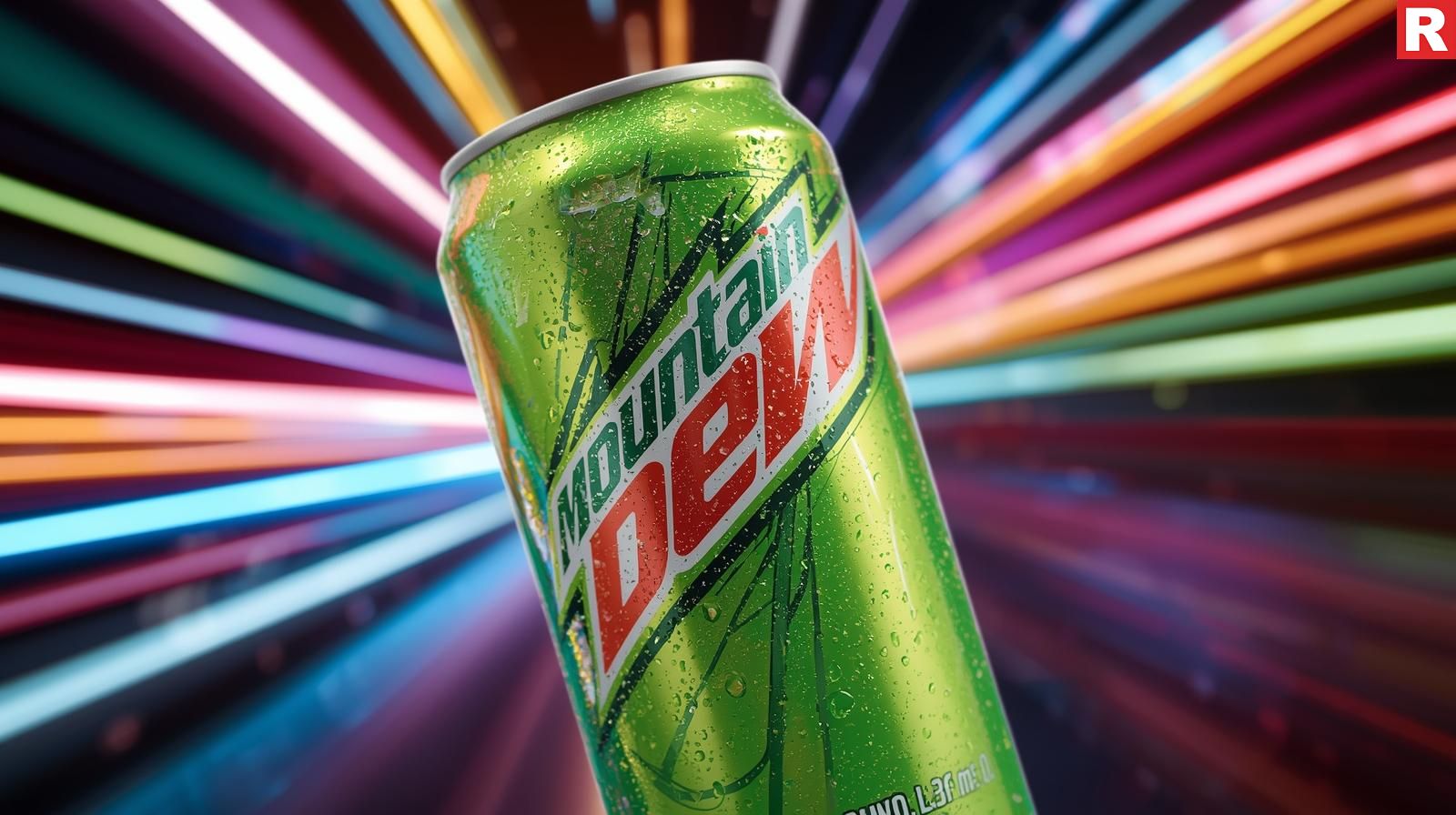
Because of its high sugar and caffeine content, Mountain Dew, a classic soft drink, serves as an unofficial energy drink for many Indians. It provides a brief, sweet thrill along with a caffeine spike. Its "Darr Ke Aage Jeet Hai" motto and unique citrus flavor have made it strongly associated with taking risks and conquering obstacles.
Caffeine: Approximately 54 mg per 600 ml bottle.
Sugar: 73 g per 600 ml bottle.
Calories: 282 kcal per 600 ml bottle.
Energy Type: A fast, high-sugar energy boost that gives you a sugary high and a brief mental clarity boost.
6. Thums Up Charged
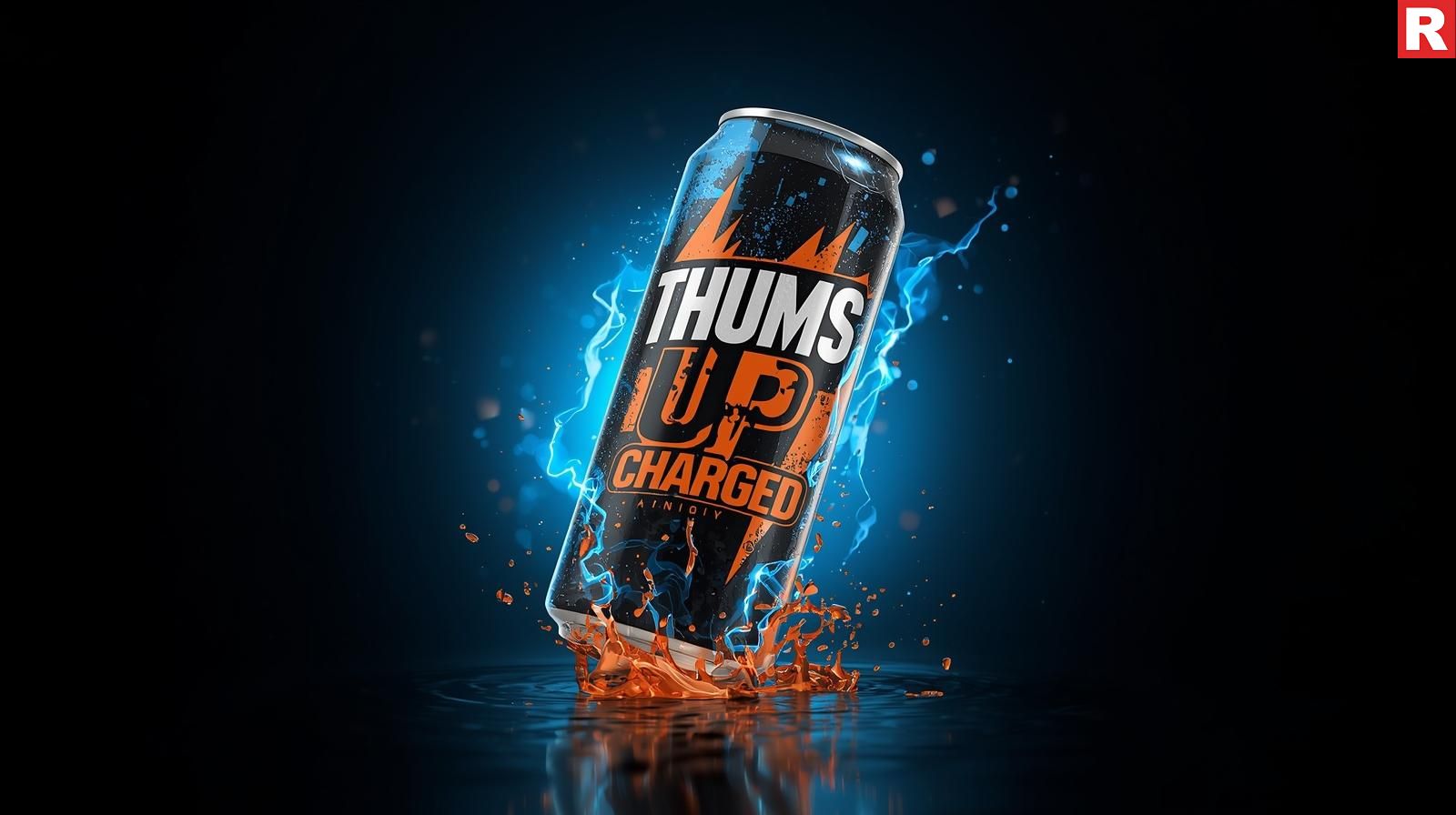
This version of Thums Up, a variant of the well-known Indian cola brand, is promoted for having more caffeine. This cola, which has a high caffeine content, promises a strong energy boost while maintaining the rich, well-known flavor of the original Thums Up. Customers who desire the traditional cola experience with a big energy boost are pleased to by it.
Caffeine: 61.5 mg per 250 ml bottle.
Sugar: 18.25 g (7.3 g per 100 ml) per 250 ml bottle.
Calories: 75 kcal (30 kcal per 100 ml) per 250 ml bottle.
Energy Type: A strong energy boost along with the robust, well-known flavor of a traditional cola.
7. Tzinga
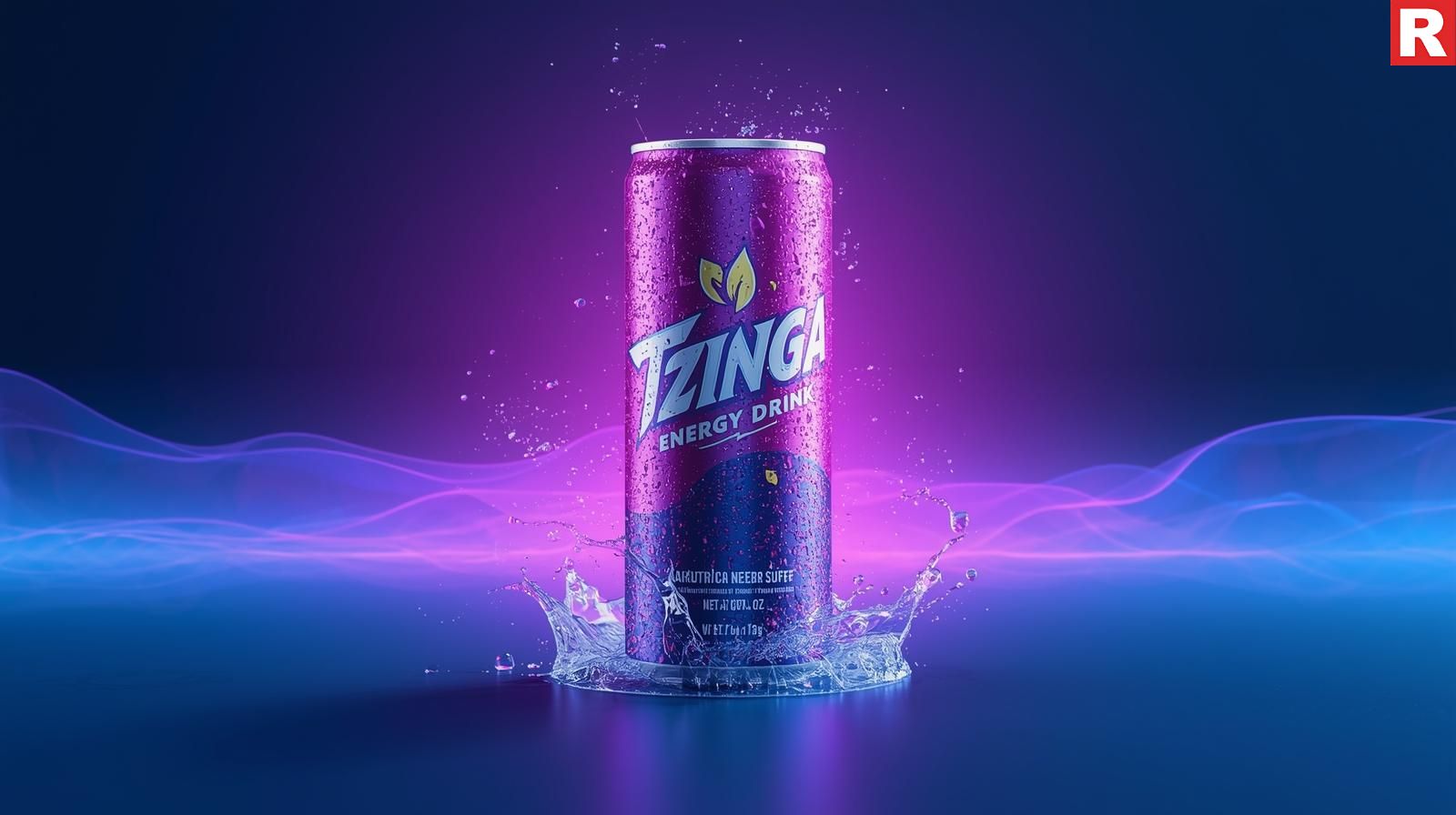
With a variety of unique and tasty options, the energy drink brand Tzinga has effectively established a niche for itself in the Indian market. It is a well-liked substitute for more costly foreign brands since it has a reputation for being an affordable option that also provides a consistent energy boost.
Caffeine: 72 mg per 250 ml can.
Sugar: 18 g per 250 ml can.
Calories: 82 kcal per 250 ml can.
Energy Type: A quick, accessible, and efficient energy boost that comes in a range of tastes.
Check out: 6 Fermented Drinks Known To Support Digestive Health
10 Delicious Detox Drinks | Easy Detox Drinks for Summers
8. Cloud 9
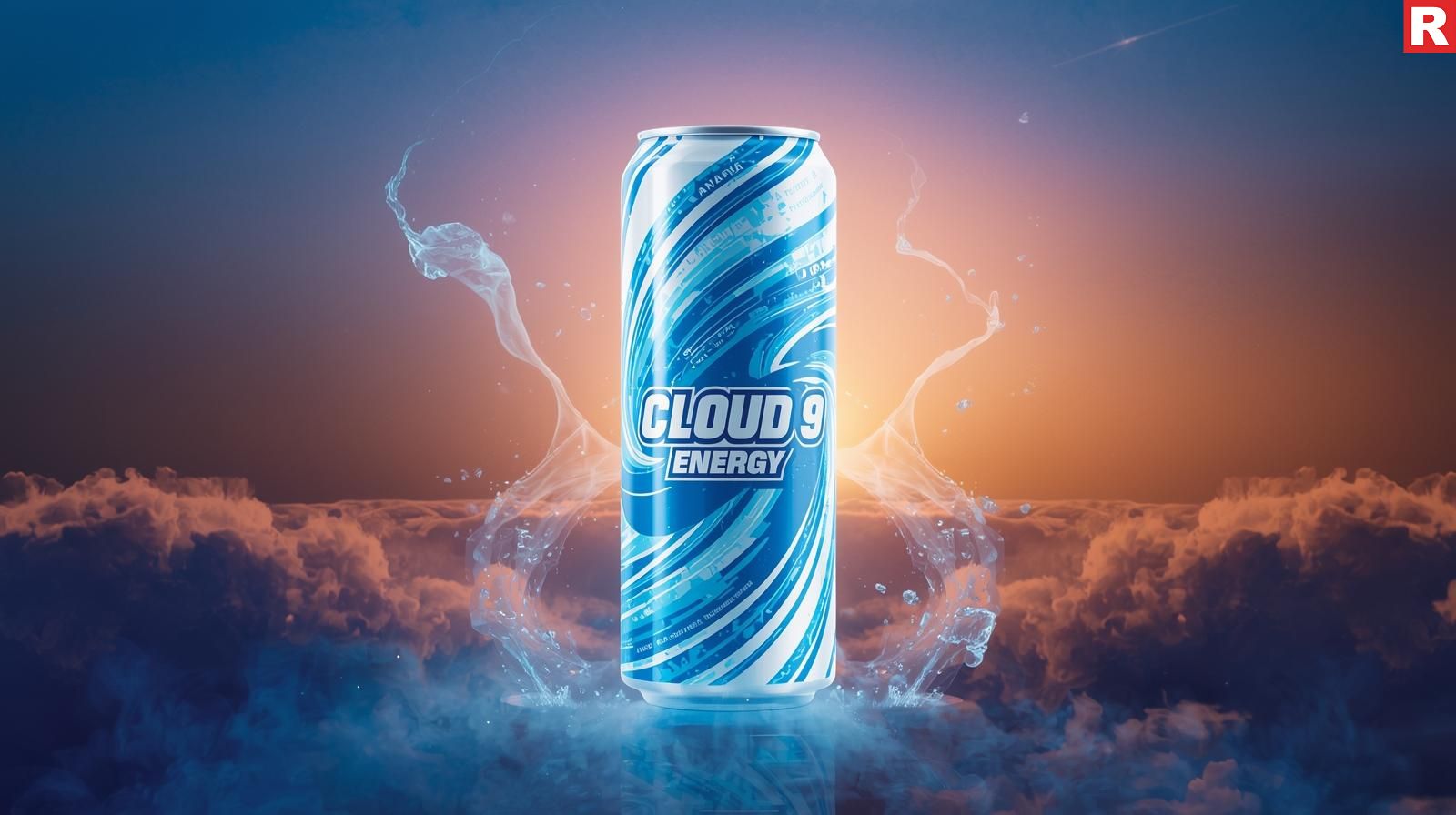
An Indian energy drink company called Cloud 9 is well-known throughout the nation and has a traditional, citrus-inspired flavor profile. A popular choice for a wide variety of customers, it is promoted as a reviving and delightful carbonated beverage that gives a rapid energy boost.
Caffeine: Although not always stated on the box, caffeine content is usually between 70 and 80 mg per 250 ml, which is comparable to other energy beverages.
Sugar: Approximately 27.5 g per 250 ml can.
Calories: Approximately 110 kcal per 250 ml can.
Energy Type: An energizing and revitalizing energy boost that is ideal for a last-minute pick-me-up.
9. Power Horse
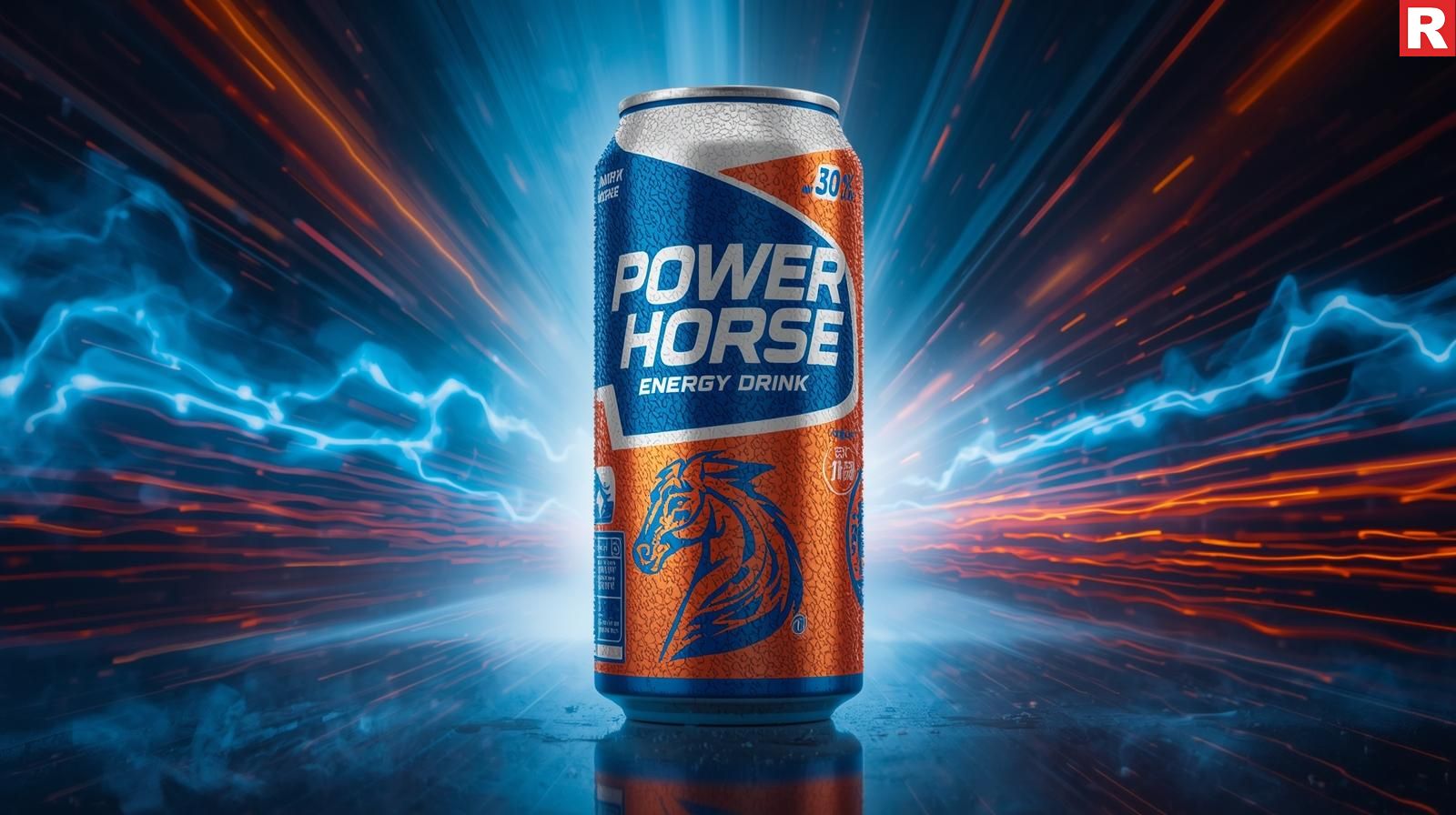
Power Horse is a well-known global brand that has established a significant presence in the Indian market thanks to its potent, somewhat sweeter flavor profile. It offers a steady and dependable energy boost, making it appealing to a large Indian consumer base that appreciates the flavor and functionality of a reputable international brand.
Caffeine: 80 mg per 250 ml can.
Sugar: 27.5 g (11 g per 100 ml) per 250 ml can.
Calories: 110 kcal (48 kcal per 100 ml) per 250 ml can.
Energy Type: A consistent energy boost that supports lasting alertness and attention.
10. Wild Tiger
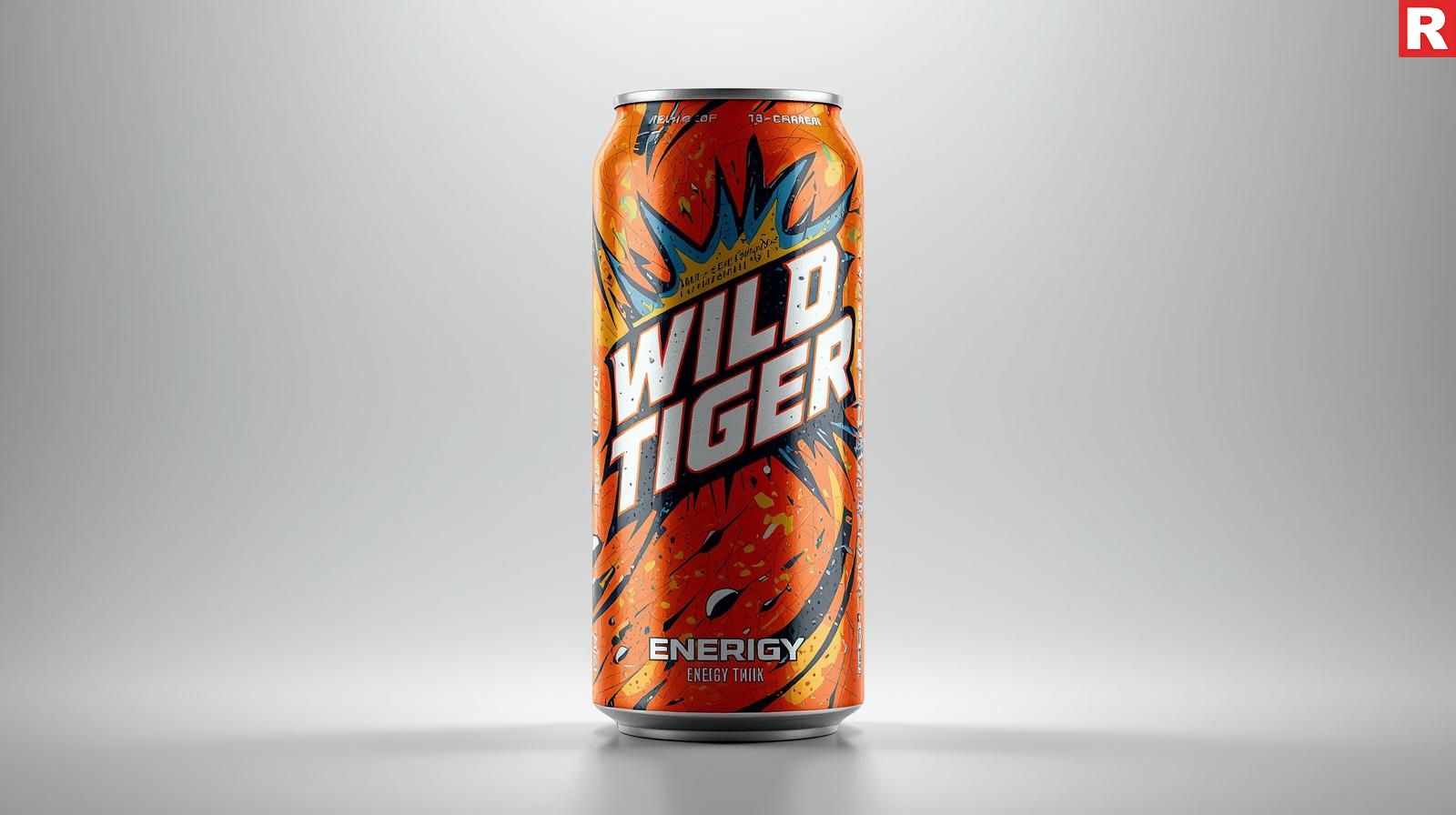
Another well-known Indian company that has centered its branding on a unique, exotic appearance is Wild Tiger. Well-known for its unique taste and frequently available in a range of retail locations, it offers a consistent and strong energy boost and is a dependable substitute for some of the more costly brands.
Caffeine: Usually between 70 and 80 mg per 250 ml can, though this is not always the case.
Sugar: 25 g per 250 ml can.
Calories: 125 kcal per 250 ml can.
Energy Type: A reliable and constant energy boost that promotes mental clarity and fights weariness.
Read this: Frankenstein-Inspired Foods and Drinks for Your Spooky Celebrations
A Word of Caution: The Risks
Energy drinks can be a helpful tool, but it's important to be aware of any potential drawbacks. Many of these drinks include a lot of sugar, which can lead to tooth decay, weight gain, and other health problems. An increased heart rate, jitters, anxiety, and disturbed sleep can result from consuming too much caffeine. These beverages cannot replace adequate sleep, staying hydrated, and eating a healthy, balanced diet. You should always be mindful of your own personal caffeine sensitivity and take them in moderation.
Conclusion
Energy drinks, which provide a practical means of overcoming weariness and boosting productivity, have solidified their position in the fast-paced Indian culture. There are several options available on the market, ranging from the well-known Red Bull and Monster to domestic favorites like Sting and Thums Up Charged. Customers may make wise choices if they are aware of the ingredients and nutritional information, particularly the important details about calories, sugar, and caffeine. Always put your health and well-being first, and use these drinks as a tool for a short-term energy boost rather than as an excuse for long-term energy.

Pune is all set to experience a new high energy cocktail society, Cobbler & Crew at Kalyani Nagar.
The place has a cocktail menu worth savoring every sip of from its list of 12 superhit cocktails.
For pro-society members who want to order their favorite cocktails, watch as bar head Mayur Marne (ex-brand ambassador Diageo) enthralls members with even more special drinks curated especially for them.
“Pune is exploding in terms of the F&B sector yet it was missing a cocktail culture. One would have to travel to indulge in such an experience. The 5 of us came together to give the city something it could call its own, something to be proud of. This cocktail society was created for all enthusiasts who have come to appreciate the finer things in life,” shared Vijeta Singh, Co-Owner of Cobbler & Crew.
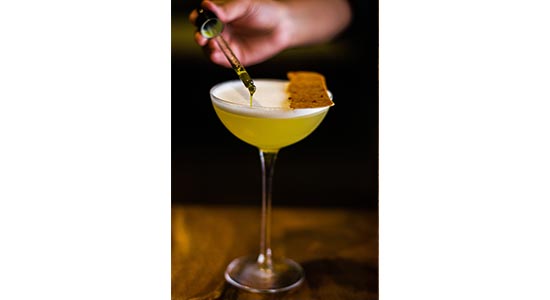
THE COCKTAIL SOCIETY
A new generation with a growing appetite for drinks and cocktails needs a space where they can experience, enjoy and entertain themselves with their favorite tipple. They also need a space where bar professionals with experience from across the world can introduce them to the latest concepts in fine drinking. Enter Pune’s first cocktail society – a high-energy space to enjoy and discover drinks at a cocktail-first space with a banging list of specialty cocktails to choose from, a space to vibe with people behind the bar.
THE COCKTAILS
Cobbler & Crew has incorporated local ingredients with a focus on natural sugar sources instead of processed sugar. A local favorite dessert called The Shrikhand, it’s a milky delight in the form of a cocktail. Guests can also enjoy an array of cocktails with an added twist: Bhakarwadi, Khakra, and Thecha. The cocktail bar also uses locally grown and sourced fruits such as Strawberries and Guava that has been experimented with in the menu. With a twist of local ingredients and global bar culture, the high-end cocktail bar has something for every guest’s palette. There are many other firsts that Cobbler & Crew is bringing to Pune – right from its ingredient-forward cocktail menu to its Martini in a Trolley experience that seeks to create variations of the classic drink.
THE FOOD
Cobbler & Crew has created its inaugural seasonal menu of 8 unique creations influenced by classic cocktails and reimagined for today’s generation of fine drinkers. The beverage program is the result of careful thought and passionate craftsmanship alongside tireless trial and error. It also supports locally sourced ingredients, natural sweeteners used in drinks, and artisanal beverage techniques as a conscious effort to fine tune the drinking experience of our guests. The team’s radical interest in ingredient-first philosophy reflects on its food menu too with co-founders having experience with Michelin star experience. With dishes such as (add top three dishes), the cuisine is curated from across the world offering you something to discover, to rekindle, and to find comfort in. The food menu is curated by multiple consultants from all over the world and headed by ex-Oberoi Rohit More.
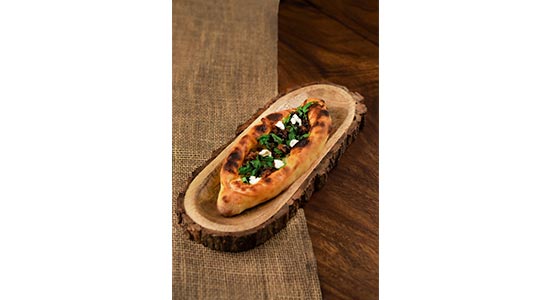
“With Cobbler & Crew, we wanted it to be more than a bar, it was about creating an intimate experience, be it sipping on a cocktail, dinner with friends, or a private affair. A place you could sit back and relax even on a buzzing Saturday night in the city. The space very well reflects a similar thought along with our fanatical admiration for modern colonial aesthetics. Dimly lit interiors with cozy, spaced-out seating make it your go-to bar on any given day of the week,” she added.
Cobbler & Crew plans to work with an array of experts every few weeks, and keep experimenting and altering the menu to introduce them to some world-class food fare whilst keeping up the season and trends – again a first for Pune!
The cocktails and food can also be paired with a line of premium handmade cigars that roll off your fingers as its lip-smacking cuisine does.

Co-founded by Karan Khilnani who also runs Elephant & Co, Vijeta Singh With eight-plus years of strategy consultation and brands like Accor and Marriott behind her, Mayur Marne Eight years of traveling the world as Diageo’s brand ambassador, Rishi Bhog Cobbler & Crew’s food program is led by Hedonist’s partner that started the concept of fine food experiences in Pune Cobbler & Crew in one word – Innovative Food Prasad Thergaonkar The Hedonist’s former capt who has exposure to global food is all about good food and great vibes.

How did the idea of serving variety of teas and beverages come to you?
Our menu is inspired by the choices that you get in different regions of India and around the world. If I go to Kolkata and have a certain kind of tea then I won’t be having the same tea when I am back in Delhi. The idea came from here where I thought why we can’t create a menu which is inspired by regional beverages. That was the whole idea that came into my mind while stepping into this industry.
How was your journey from being a graphic designer to the owner of a venture?
The journey was very challenging. The transition into the F&B industry was very new and challenging for me as I don’t have any background, training, and experience in this industry before. There were lots of learning’s and mistakes which I corrected while setting up the business.
What were the various difficulties faced?
What adds to your difficulty is the fact that whether you belong to the food industry or not. If you are, then you are familiar with the stuffs which happen while running a venture. But in my case, things started from the basic. I had to learn things from the scratch from rules and regulations to methods and techniques. I had to put extra money and efforts while establishing this venture. I took a lot of time just to understand how this market actually works. I did a lot of research which I thought was necessary.
Enlighten us with the artisan factor of Jugmug Thela.
It just came from the kind of person I am. It actually also depends on what kind of places you visit. I am not a designer as I’m from the creative community. We tried to decorate the place as it’s something new and unique in its own way. Every piece of furniture, tables, the items on the plate are all handmade. Nothing is from a readymade shop. I was inspired by my chai wala where I used to go. The whole idea and few of the décor idea came from there.
What is the Jugmug Thela’s uniqueness?
I think our uniqueness is that we adapted concept from a normal tea stall which can be witness here and there on roads. I personally believe that a person goes to a chai shop just to be what they really are. They want to be who they are in reality while having a cup of tea at such stalls. Generally, people dress up and go to a certain café shop so that they can look nice. I wanted a place where people can come in their comfort zone without thinking about anything else. I just wanted people to come here and have any kind of conversation they want by providing such an environment. Jugmug Thela is a place where anybody can come, relax and enjoy without thinking how they are looking and other stuffs like that.
Why the name Jugmug Thela?
There were many reasons why I came up with this name. But the main reason behind naming it as Jugmug Thela is that one of my favorite tea shops in Delhi used to be situated right beneath the babool tree which is no more there. That tree is now cut down. Whenever I used to visit there in earlier winters and monsoon, there would be fireflies in the tree. I used to sit under that tree at night with the fireflies surrounding us. That’s how I came up with this name Jugmug Thela. The word jugmug came from ‘jugmagate jugnoo’ and thela as a fact that I started with it.
What ‘s next in your kitty?
There are lots of surprises which I hope will be liked and appreciated. I am just sure that we are not going to create a franchise kind of model because I believe in providing people with something different. I’ll be changing our format based on the location.
How does Jugmug Thela stand apart from other tea and beverage outlets?
Our commitment to food and quality is something which makes us stand apart from other outlets which are available in the market. Everything which is available here is in-house and we never ever try to compromise with the quality of items we serve. In fact, 95% of the products are made in house at Jugmug Thela. We don’t even put chemicals to enhance the life or quality of food. We are trying to be ethically right and at the perfect place while serving to the customers.
What are your expansion plans?
We are going to expand region by region. My expansion plan is not going to be standard model that most of the outlets do. I am not looking at the scale which is very big in number for sure. For now, all I am thinking is to provide people something different from our previous outlet every time a customer visits us. After covering the regions, Jugmug Thela will surely move pan India.

Traditionally, a fixed set of characteristics have been associated with various food formats. However, over the years the hybrid concept was introduced to primarily create a niche for consumers.
Beverage-based Formats
Over the past five years, beverages have gained increased prominence in the food services market.
Tea lounges: In parallel with the growth of Café culture, tea lounges, as a concept, have also gained momentum. The large populace of a tea lover is open to experimenting with variants of tea. This opportunity is taped by both Indian and international players. Even regional brands like Tapri Chai, Chai Garam and Chai Point, and business house like the Tata’s (Chai Unchai) and Waghbakri have forayed into the space. These tea lounges offers a wide choice of Indian and international tea flavors, besides blended tea with honey, herbal and fruit tea.
· Alcoholic beverages: Due to the changing consumer lifestyles and increased incidence of social drinking, alcoholic beverages are gaining popularity. This has fostered the spread of retail formats which serve an assortment of both domestic and international brands under the same roof, e.g. Aura- The Vodka Bar, Bombay High etc.
Theme-based Formats
These are a new concept in the food services market wherein the main theme takes precedence over all other factors, including food, service and the overall ambience.
· Microbreweries: The emergence of microbreweries is a recent market phenomenon. They are limited to a few geographical locations mainly metro cities. As the name suggests, these outlets brew beer in-house and offer variants across different price points. Most of the breweries draw inspiration from the American and British pub culture – right from the ambience to interior design, with tables made of beer barrels, leather couches, wooden bar counters, neon display, low lighting and smaller food offerings. Players in the space include Toits in Bangalore, Lemp Brewpub & Kitchen, Rockman’s Beer Island, Strikers and Howzatt in Gurgaon.
· Entertainment Cafes: Entertainment cafes with entertainment options as board games, pool tables, foosball, live performance, etc. are being offered by food services players to differentiate themselves and establish a unique brand proposition in the consumer’s mind. Players like Comedy Night, Open Mic, and 5 Minutes of Fame are attempting to create consumer pull through varied entertainment offerings. Other players such as Howzatt and IIFA Buzz Café in the space are based on entertainment concept closer to cricket and Bollywood, respectively.
· Cocktail menus: In today’s market it is important for players to balance offerings with changing consumer demand. This makes it vital for players to build relationship and, through a strong consumer connect, establish a loyal customer base. The consequence is the adoption of diverse approaches as menu engineering models (a structured approach to designing menus) and menu strategies (concept that are creative, unique, and in line with the player’s business objectives).
· Indianisation and Rlocalisation: Indianisation is the current buzzword in the food services market, with players modifying their core offerings to suit the consumer’s palate. A good example is that of international player Mc Donald’s which has succeeded in India with a menu sharply contrasting its menu in the international markets; chiefly, pork and beef-based products are excluded; instead more than half menu is made up of vegetarian items.
· Value meal: Market players are adding combos and value meals to their menu in a bid to turn a prospective customer into a consumer. Some examples of value meal include the Happy Price menu from Mc Donald’s, KFC’s Bucket and Box Meals, and Subway’s combos in the QSR segment; Pizza Hut meals for the two; Yo China’s lunch combo, and; TGIF’s combo meal in the PBCL segment.
(Source: Indian Food Services Report, 2013, NRAI)

Is there a country that can boast a greater array of alcoholic tipples than France?
Whether it’s Bordeaux wine, Champagne from Champagne, Normandy cider, beers and spirits from Cognac to Cointreau, France has always been a bulging drinks cabinet. But the locals it seems are drinking less and less, according to an industry survey. Indeed the level of consumption of alcoholic drinks has fallen over a lengthy period.
On the other hand, India's alcohol industry is the third largest in the world with a value of $35 billion. Various startups have emerged to gain a share of this rising market. The microbreweries we see sprouting in every corner of the city are here to stimulate India’s brew business. While microbreweries are making their mark, there are industry experts who have a different approach when alcohol is concerned.
Make it More Favourable
French Sommelier Magandeep Singh said,” Drinking habits should be changed and Indians should be drinking less in quantity but more of quality.”
The relationship young people have with alcohol is strongly influenced by the western culture. Our culture normalises the consumption of alcohol creating a relaxed attitude towards alcohol and the view that it is not harmful. This culture also influences how young people view alcohol.
Ankur Chawla, Director of Beverages, JW Marriot, New Delhi says, “How beverage is experienced today is changing and it is way beyond the theoretical concepts. So it is the experience now that matters. The evolution in the beverage sector has a lot of examples he adds.
The Big Picture
New global research into drinking attitudes of millennial consumers (aged 21-35) has revealed that self-awareness and staying in control are the motivating factors for moderating alcohol consumption during a night out. 75% of millennials say they now limit the amount of alcohol they drink on the majority of their nights out. The popularity and reach of social media among this age group means that control of their self-image is paramount.
Viewing alcohol as something that is not harmful can encourage young people to drink at an earlier age and aspire to be part of the general drinking culture they see around them, which includes harmful alcohol consumption.
On one hand, moderate amounts have been linked to health benefits. On the other hand, it is addictive and highly toxic when we drink too much of it.
Quality over Quantity
Taste and quality should definitely fit in to your priorities when choosing an alcoholic drink. The x-factor for a great night out is shifting, with millennial prioritising good food and friends over excessive alcohol consumption. They are also searching for 'new experiences' (49%) rather than the same old 'great entertainment' (39%).
“Looking at a bottle and the way it is presented makes a customer choose their drink and it is amazing. People are very particular about their requirements and taste and it is both for alcoholic as well as non-alcoholic drinks. The way we serve has also changed. In fact, I feel that the popularity of a beverage brand depends a lot on hotel than a consumer”, added Chawla.
Educate the Masses
Talking to Rahul Singh, President, National Restaurant Association of India (NRAI) & Founder & CEO, The Beer Café about the importance of educating the masses on ‘Smart Drinking’ said,” Drunk Driving is a blithe and must be stamped out. So many innocent victims lose their life due to driving while under the influence of alcohol. Curbing this menace isn’t the job of police alone but of bar owners and patrons as well.
National Restaurant Association of India partners with different cab aggregators during New Years and Christmas to discourage drunk driving amongst guests and also participates in campaigns - sensitizing customers; and encouraging smart drinking by training restaurant staff for serving customers responsibly.
“It’s suggested that guests who have consumed alcohol should take the breathalyzer test (if available) in the bar before exiting the restaurant premise”, added Singh.
Calling it as a trend implies to the decrease in alcohol consumption and acquiring the taste for quality liquor. To keep it simple, Drink less and drink the smarter way.
Copyright © 2009 - 2025 Restaurant India.




